

TheFlyingKerman
-
Posts
384 -
Joined
-
Last visited
Content Type
Profiles
Forums
Developer Articles
KSP2 Release Notes
Bug Reports
Posts posted by TheFlyingKerman
-
-
According to Wiki, Kerbin's sidereal orbital period is 426 d 0 h 32 m 24.6 s
https://wiki.kerbalspaceprogram.com/wiki/Kerbin
or around 426.09 Kerbin days. That means there should be 9 leap years every 100 years. Not as far as I know there is such thing in the official game. Could there be real effect on game physics or contracts?
-
11 hours ago, Kimera Industries said:
Using rockets to land a plane is probably the safest way on Duna. But at that point, if you want to hop around the planet you may as well use an ISRU hopper.
Helicopters work on
MarsDuna.



-
I built this modest plane that flies at 170m/s at 20000 m on Eve, using about 20% torque from the smallest motor. Flying higher helps.

It is capable of vertical landing and takeoff.

In my experience speed isn't the most important factor for a plane on Eve, rather its size and hence how well it can survive entry in to Eve's atmosphere.

-
IMHO the only science part I miss is an asteroid sample collector for probes. Considering there are elaborated ESA missions this is a bummer. Otherwise more science = more tedious clicking.
-
I have joined the forum for years but haven't seen anyone building something like this. The underlying idea is straightforward. With a reusable rocket the way to save cost is to use jet engines to reduce fuel cost. While jet engines are useless in space, for a reusable SSTO rocket the thrust is surplus later in the launch, anyways. The jet engine also helps reducing landing speed, saving on parachutes. I call this Jet Assisted Reusable rocket --- JARR.
I found that the Whiplash seems to be the best jet engine for this purpose. It has the best thrust from around 3000m - 10000m at around 250 m/s - 800 m/s. Usually the engine cut off below 800 m/s.
The biggest pitfall with this arrangement I found, is that the rocket is sensitive to drag. The less drag the rocket has, the faster it goes and the more thrust the jet engine gives. This proportionally increase delta V.
Here is an example of the rocket I built. It uses a Skipper and two Whiplashes and six Hammers SRB to help getting off the pad. It is about 88t on the pad.




-
On 12/1/2023 at 11:16 PM, Hotel26 said:
The perfect gravity turn is elusive!
I end up using the same lifter again and again after perfecting the gravity turn.
-
On 1/4/2024 at 2:10 AM, miklkit said:
I have been entertaining myself by hunting for easter eggs lately. I discovered that there are 2 on Bop so went looking. Got to the location of the large orange circle and there is nothing there. After some digging I found Kerbalmaps.com and it shows only 1 easter egg there. Nice. Are there any other easter eggs that are long gone?
That's right. One each body there is one randomly generated green monolith in addition to the known Easter eggs.
-
Years of research shows that Kerbals' health don't degrade after spending years in space. To become the true space faring race all it takes is a spaceship capable of moving Kerbals around in relative comfort while constantly producing snacks for them. We have built the first of such great vessel, which we simply called Mothership I for lack of a better name. It was lifted into orbit by the huge S-6B rocket.
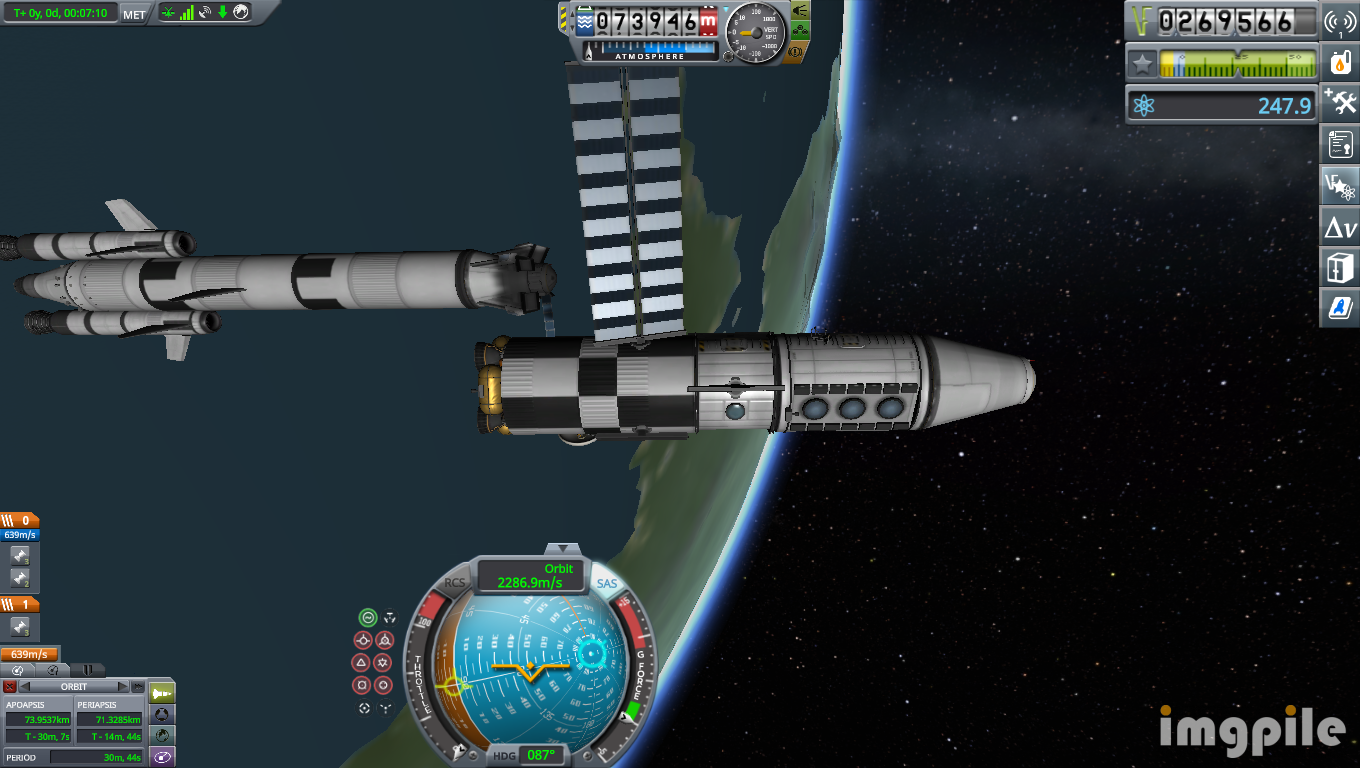
The S-6B was recovered.
A few days later the first crew, Val and Bill, arrived taking the HKA-3E spaceplane.
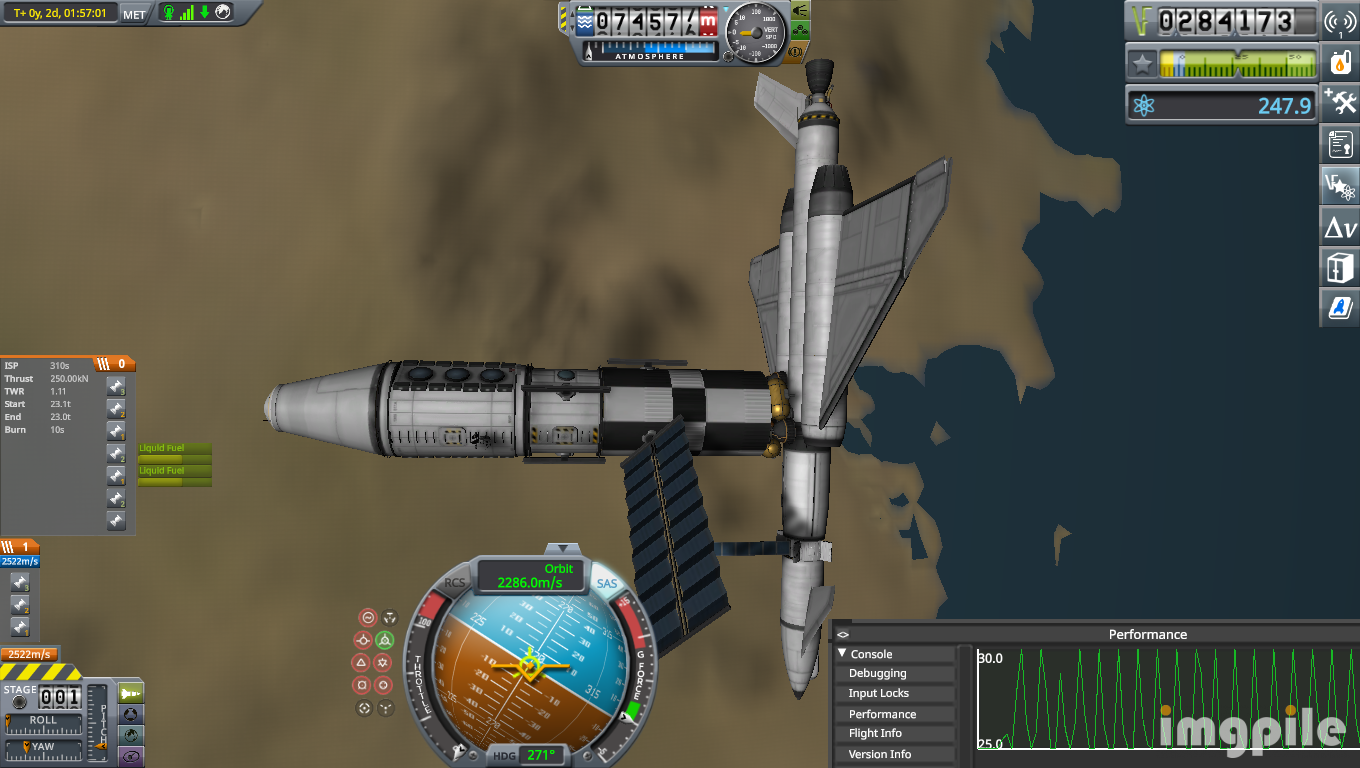
They would stay there for about half a year.
-
Big satellite
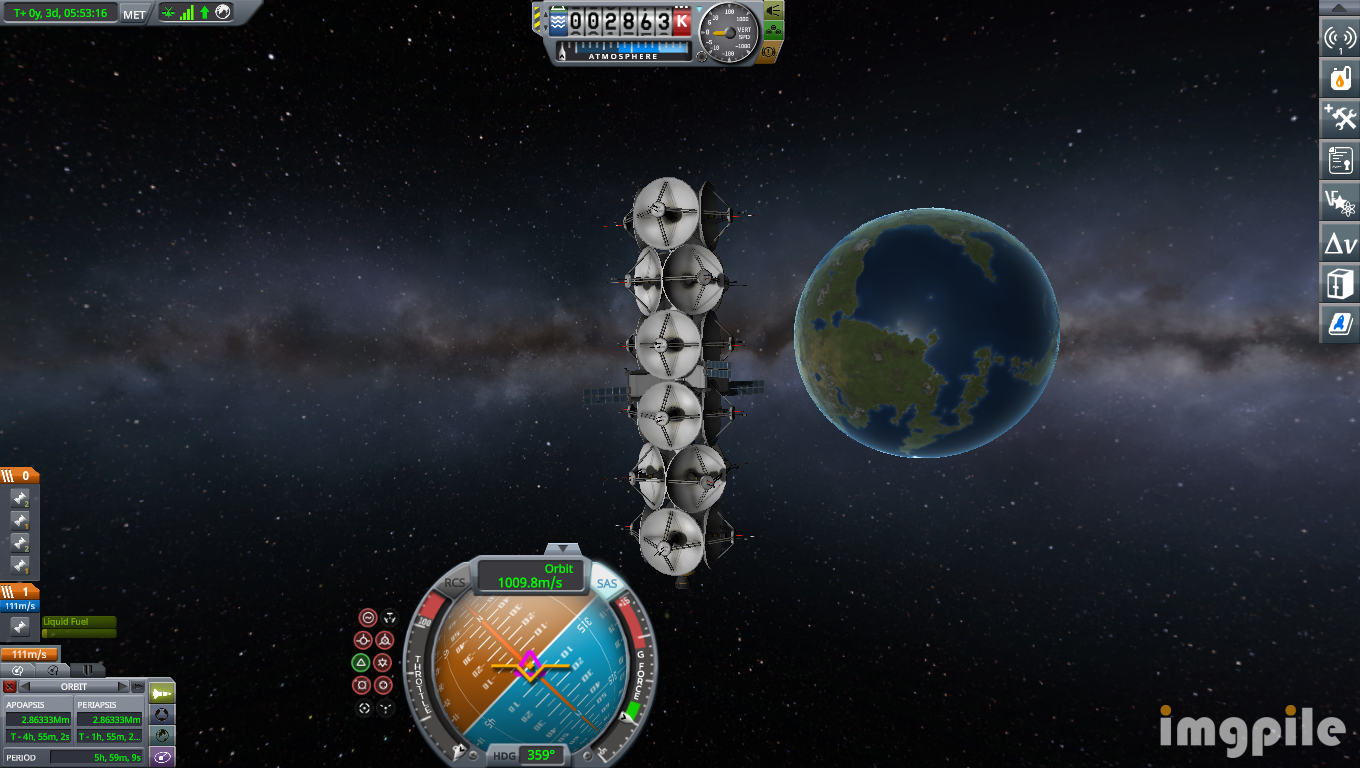
Small satellite
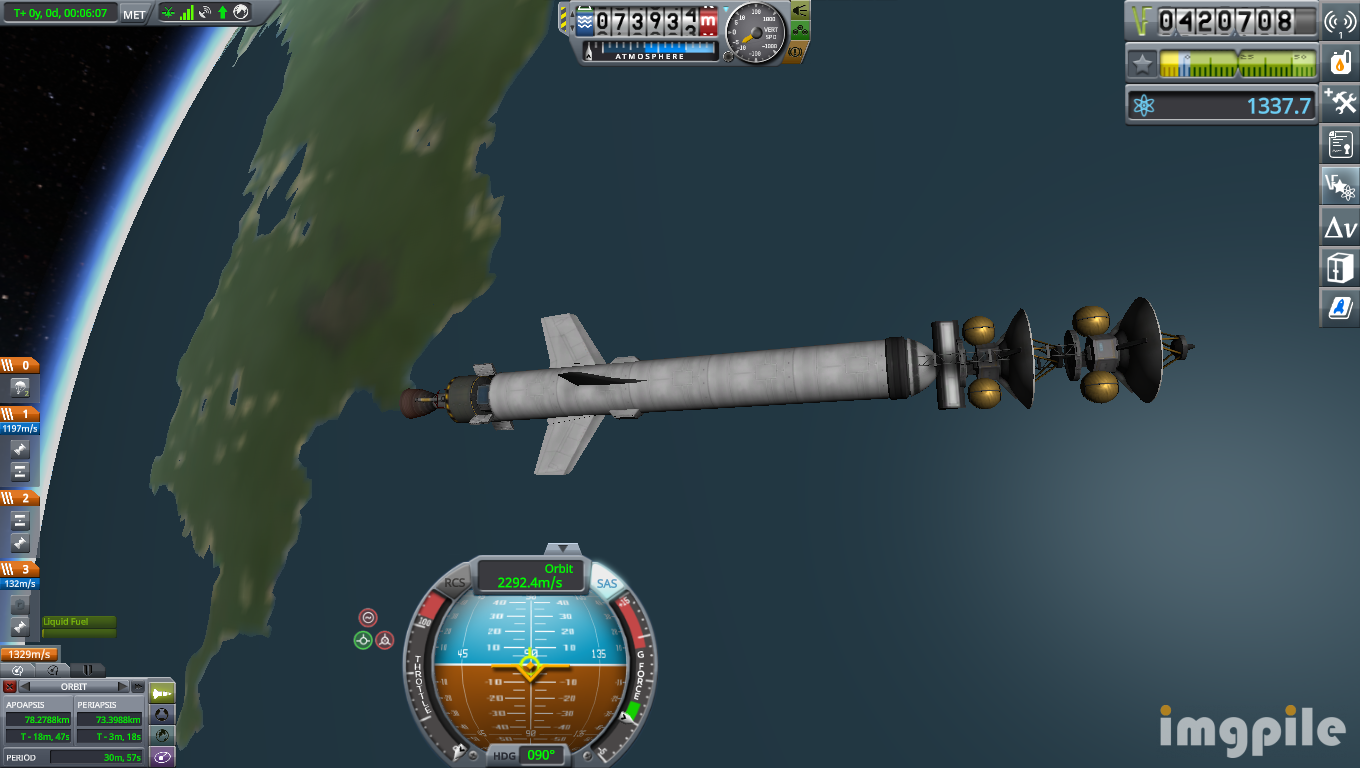
Inter-planetary micro probes
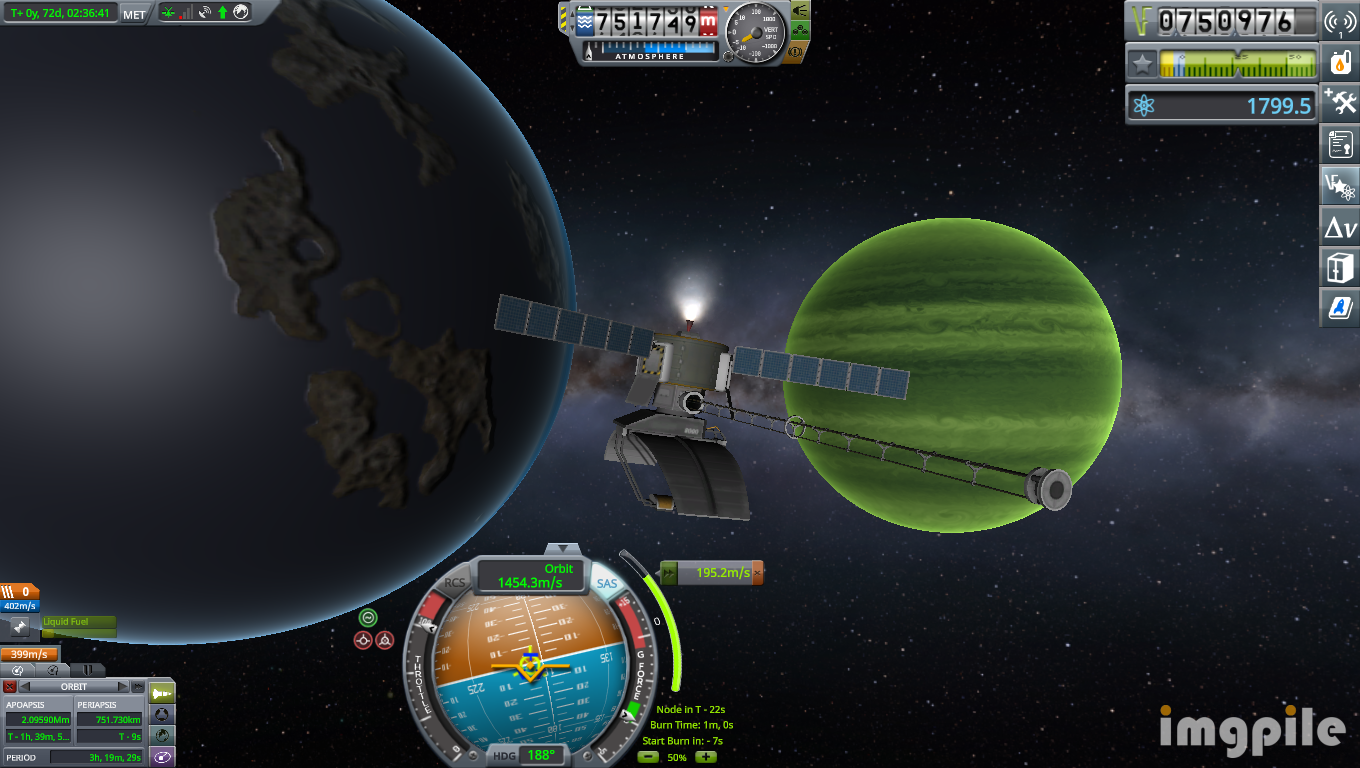

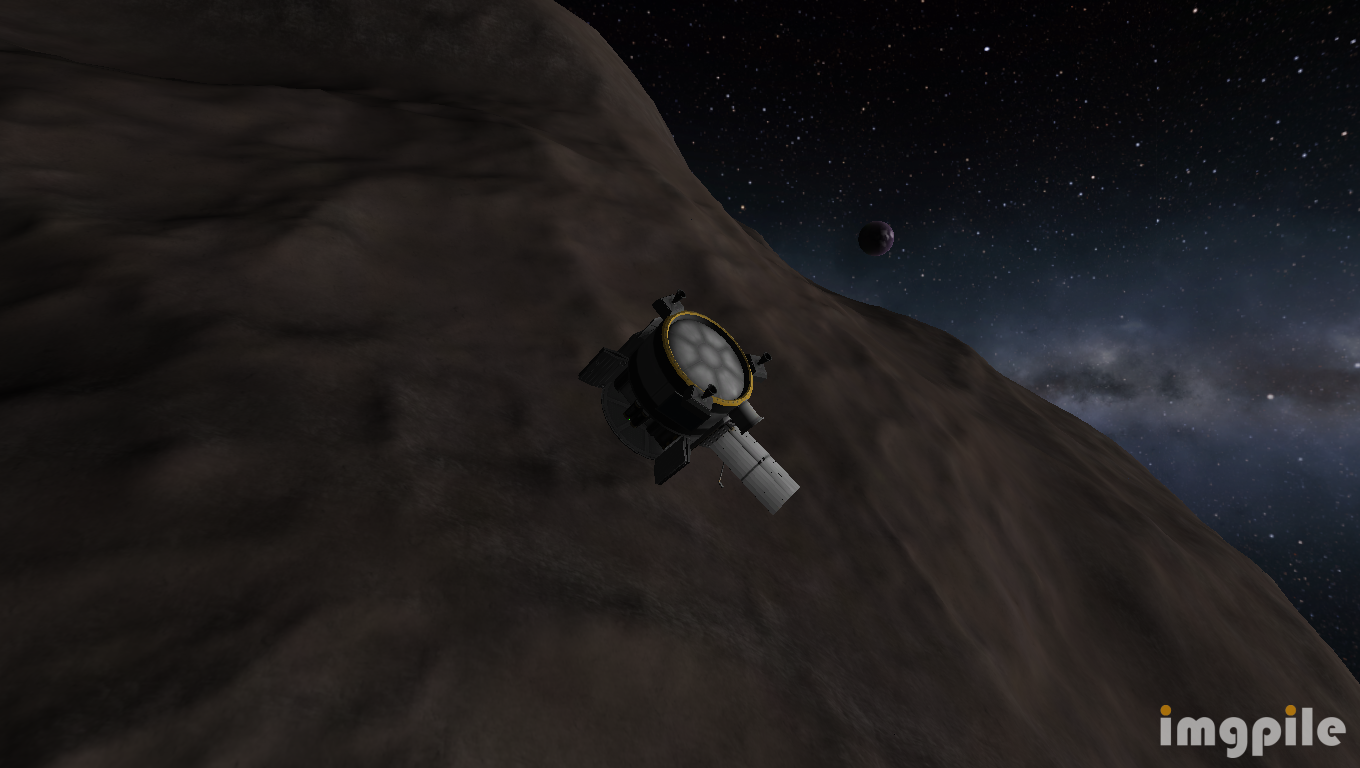
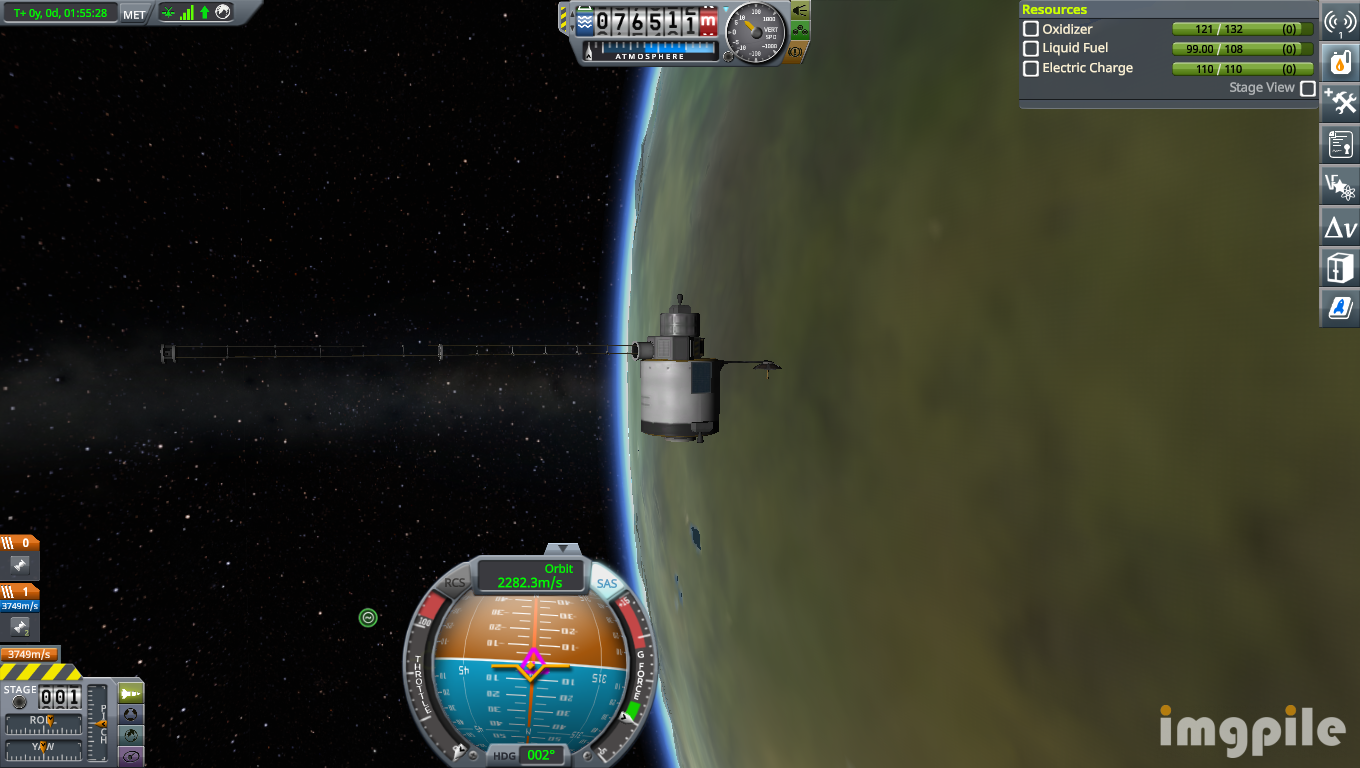
-
We need more lifting capacity than the S-3D lifter. So our engineers began building a heavy reusable SSTO, capable of lifting 30-35 t into LKO, based on the powerful Twin Boar. The project soon run into difficulty. The main criticism with the Twin Boar engine was its poor ISP, resulting in high fuel cost, not to mention the 65000 Kerbuck entry cost adopting the engine. The real deal breaker was its poor aerodynamic profile - the lifter could not be made to glide. An alternative was based on the Mainsail engine, which has the advantage of better ISP and lower entry cost. However the Mainsail proved to be under powered. At that point, seeing the success of the HKA-3E space plane, some engineers proposed using jet engines as auxiliary engine to save fuel cost, or even some hybrid winged rocket to maximize the advantage to the jet engine... obviously the project went nowhere. Lastly Kerbodyne offered us the cutting edge Vector engine, with excellent ISP at all altitude, and could be fitted into 1.25m profile - perfect for aerodynamics. At that point the R&D cost for engine alone had ballooned to a staggering 115000 Kerbucks!!! Some critics reckoned a SRB based single use lifter would be cheaper, given the relatively low planned credence. However, this time the lead engineer managed to 'convince' the treasurer and move the project forward.
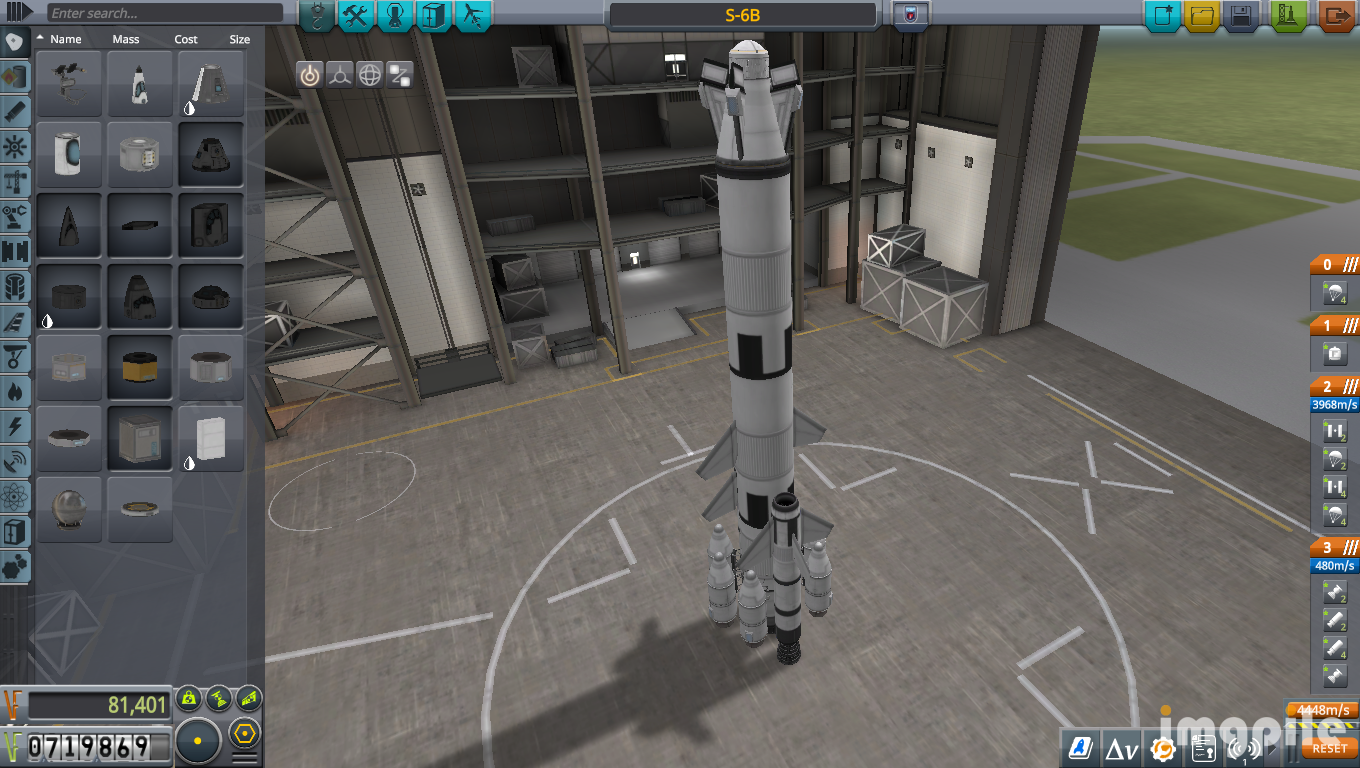
The final design, the S-6B, used 2 Vector, a Panther and 6 Hammer solid RATO. Three sets of movable fins and a set of 4 tail fins enable the 20+ t empty rocket to fly through air. With the Panther jet to assist landing, 4 parachutes was sufficient.
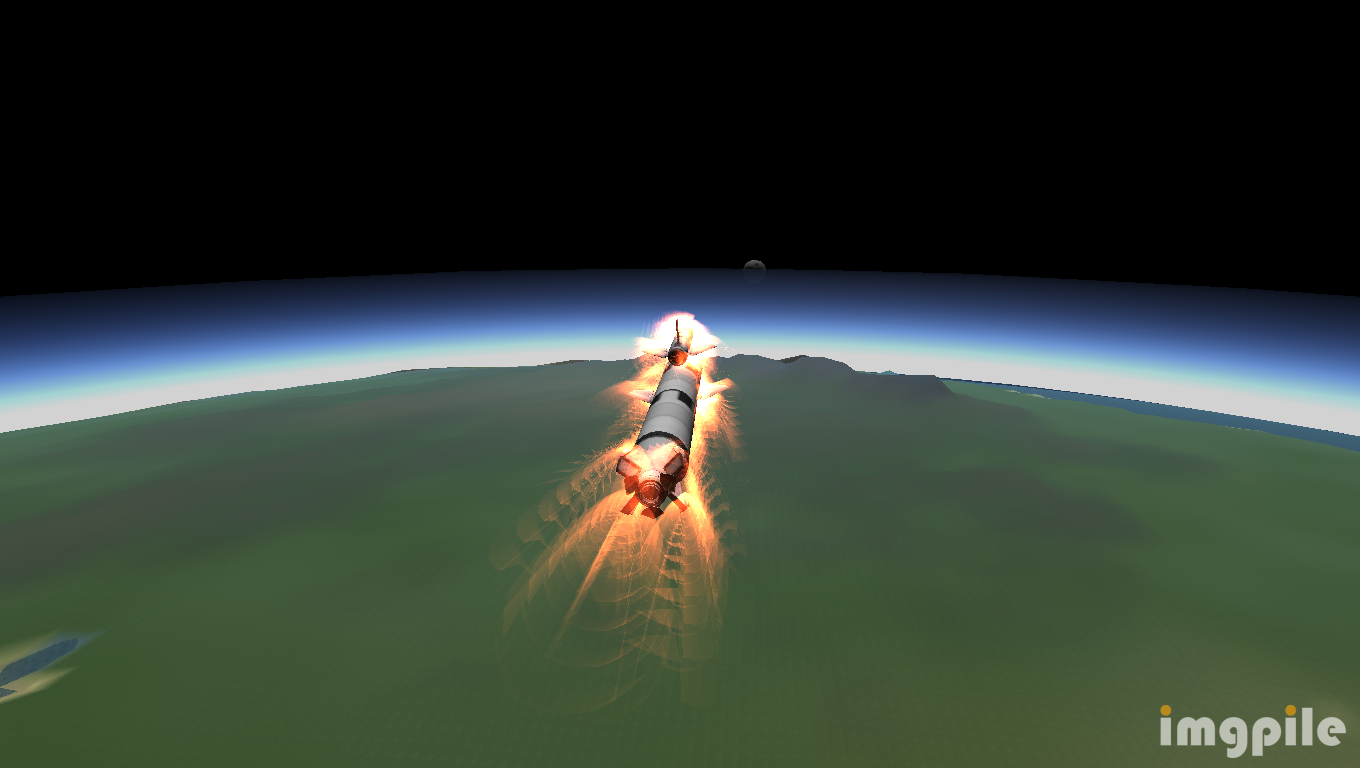
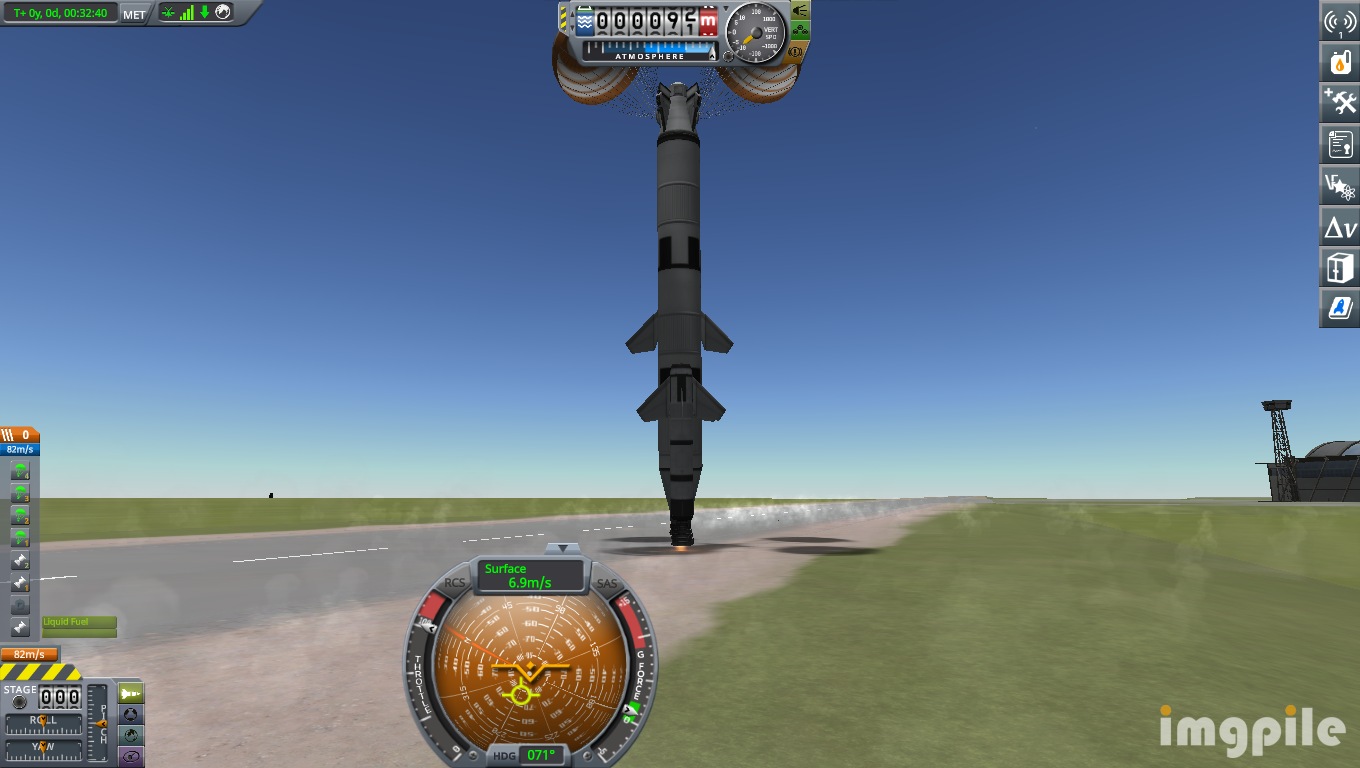
One was the first payloads of the S-6B was the 30t Kerbin DTS relay satellite, sent into Keostationary orbit above Nye Island.

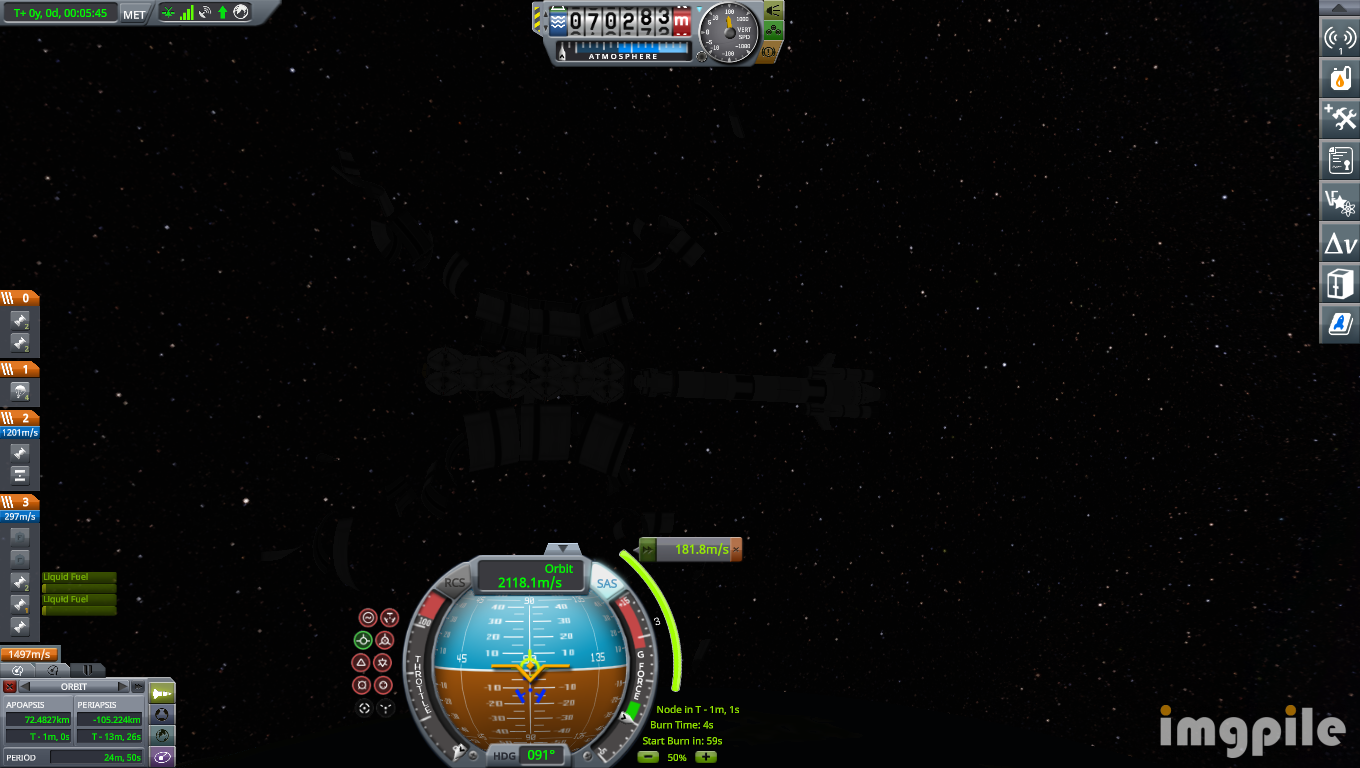
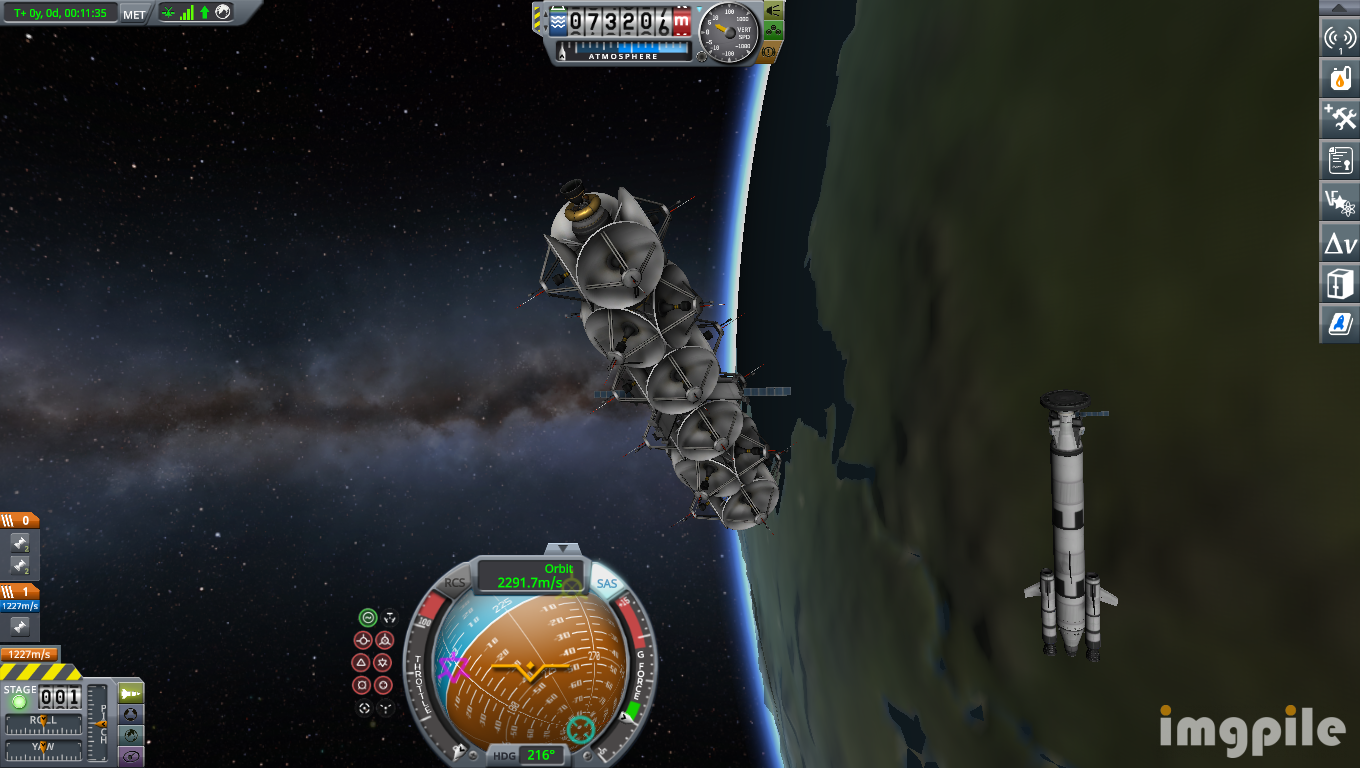
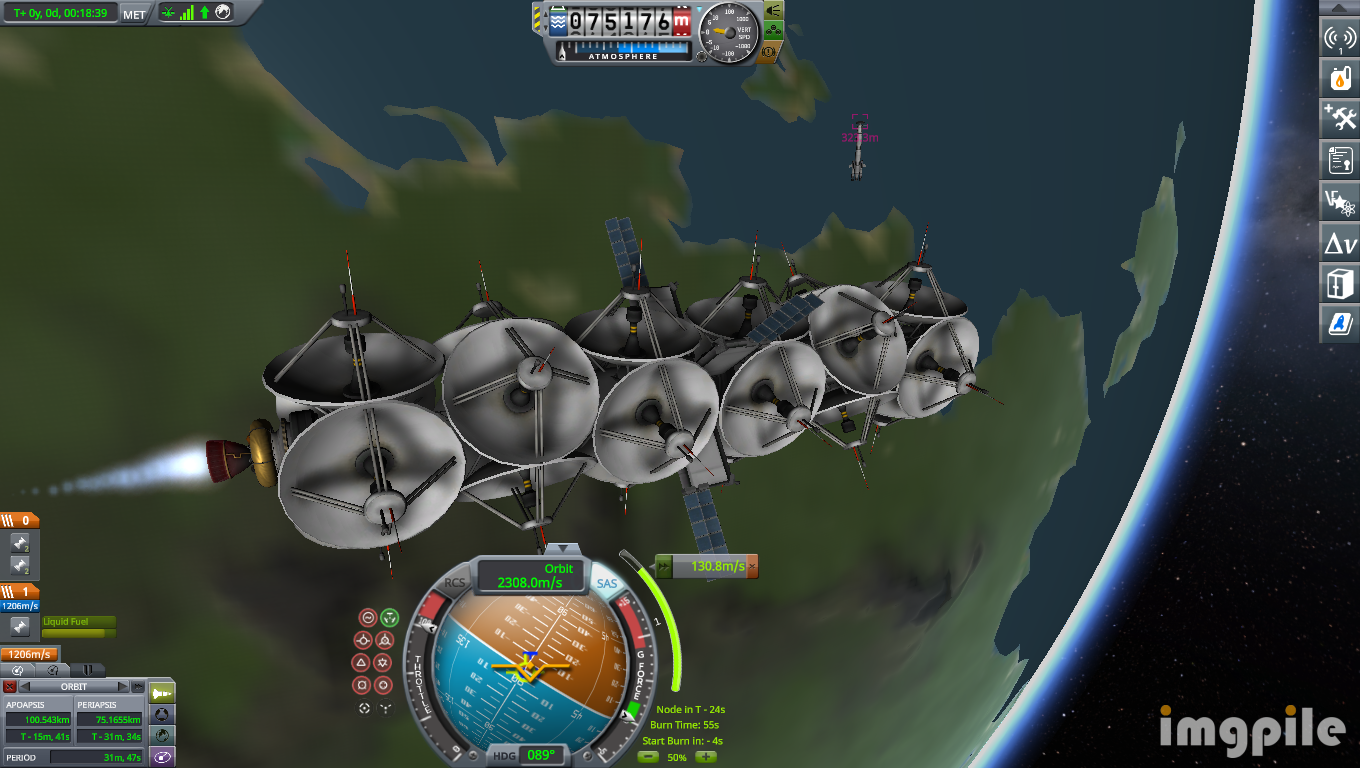

To complement the relay, the S-2F sent two Kerb-link relays into Keostationary orbit to form a constellation.

-
On 2/3/2023 at 6:42 AM, DeadJohn said:
@TheFlyingKermanI see that the front docking port, battery, and tank aren't stacked normally. Things look offset or surface-attached.
Did you build it that way on purpose? If yes, maybe part clipping is causing phantom forces and shaking your base.
Or did the base come undone by perhaps the same problem that's causing it to shake and drift?
That offset is deliberate. I attached the docking port to a 1.25 fairing base, which in turn attach to the big fuel tank via inter-stage node. The small tank is attached to another inter-stage node, and offset down. There would be a fairing protecting the legs during transit, because I am sending it to Laythe.
I found that even a simple design like this shakes
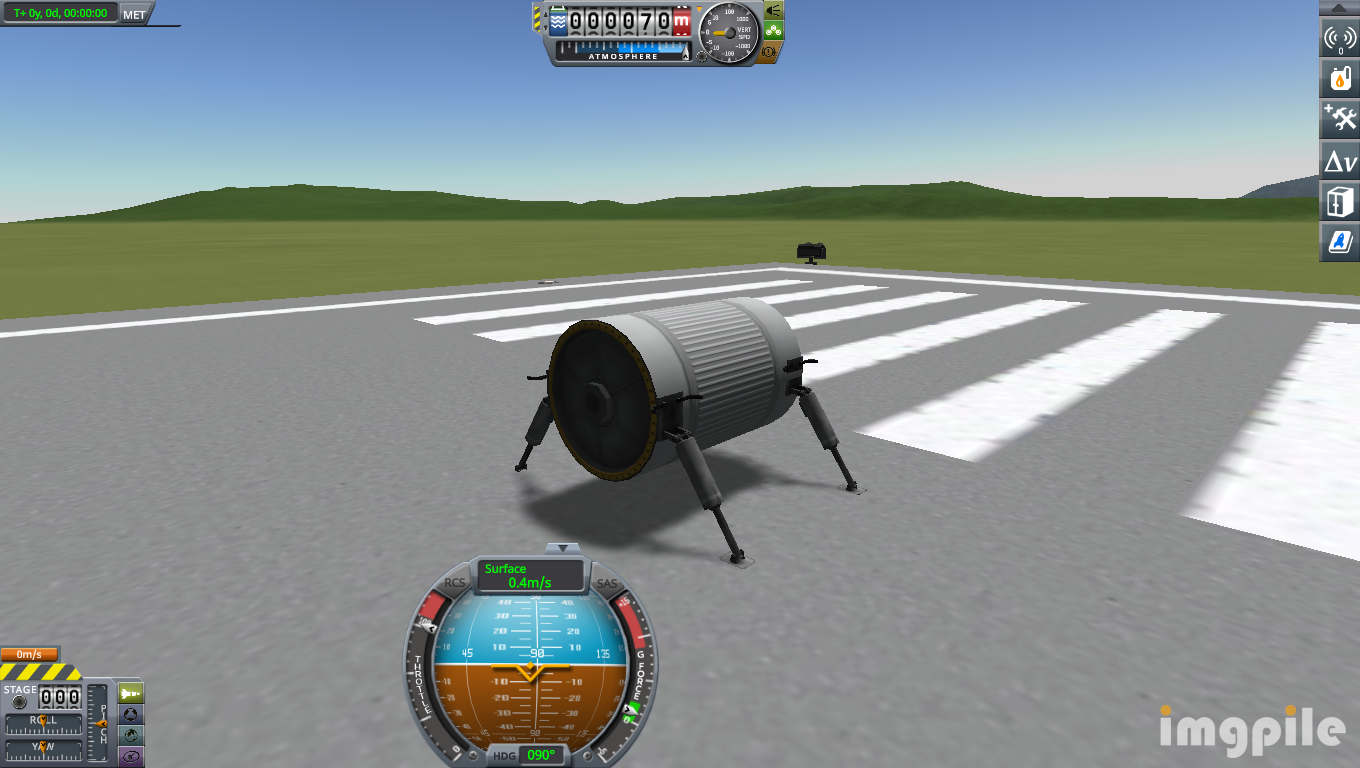
On the other hand, I Alt-F12 the module to Laythe and there seemed to be no shaking :)
-
And the result of lottery is...
Jool Surveyor I Mission Pt 3 continue form here
On 1/18/2023 at 8:36 PM, TheFlyingKerman said:Jool Surveyor I Mission Pt 2
SpoilerWhile Dres Lander I was working at Dres, Jool Surveyor I finally arrived at Pol after a 3-years flight. It entered a polar orbit. From there the orbital scanner beamed faint signature of ore in the highlands. Pol Rover I was promptly detached and landed on the surface to find the ore.
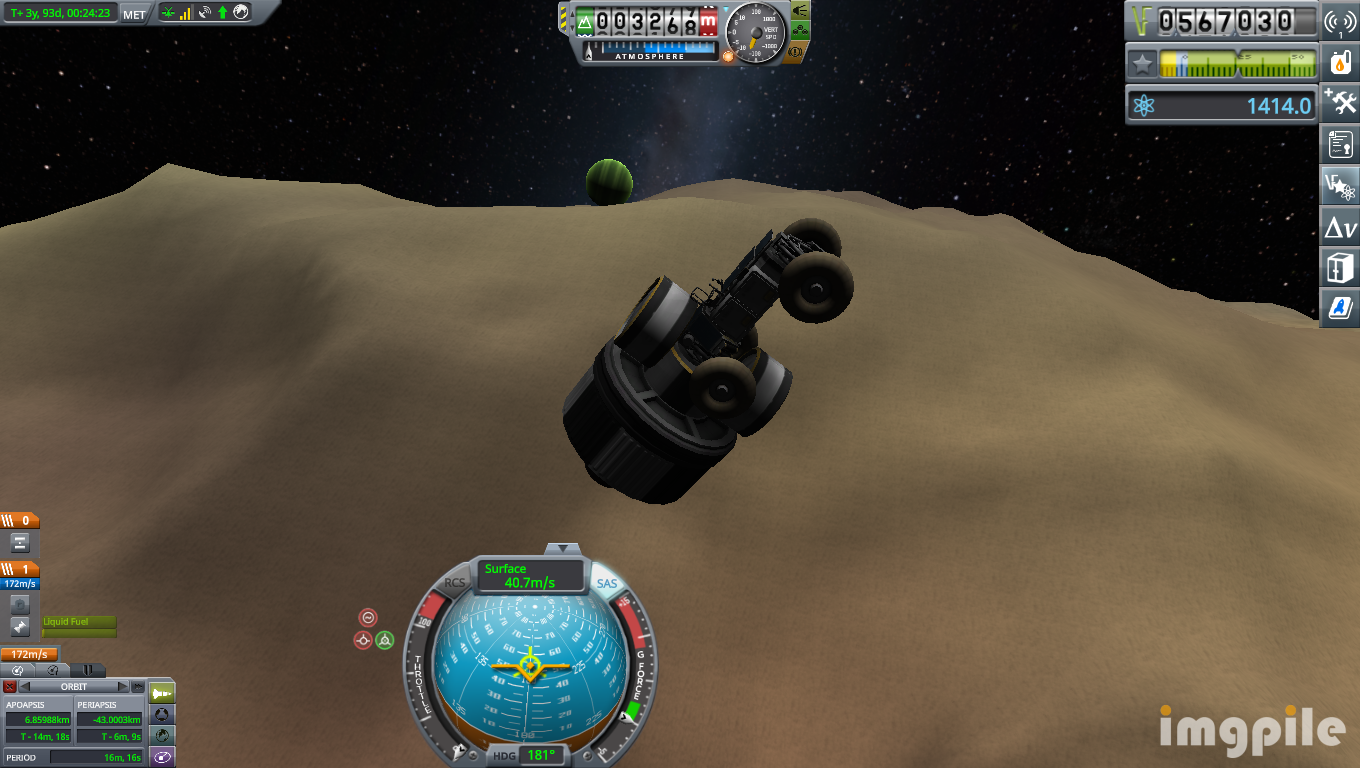
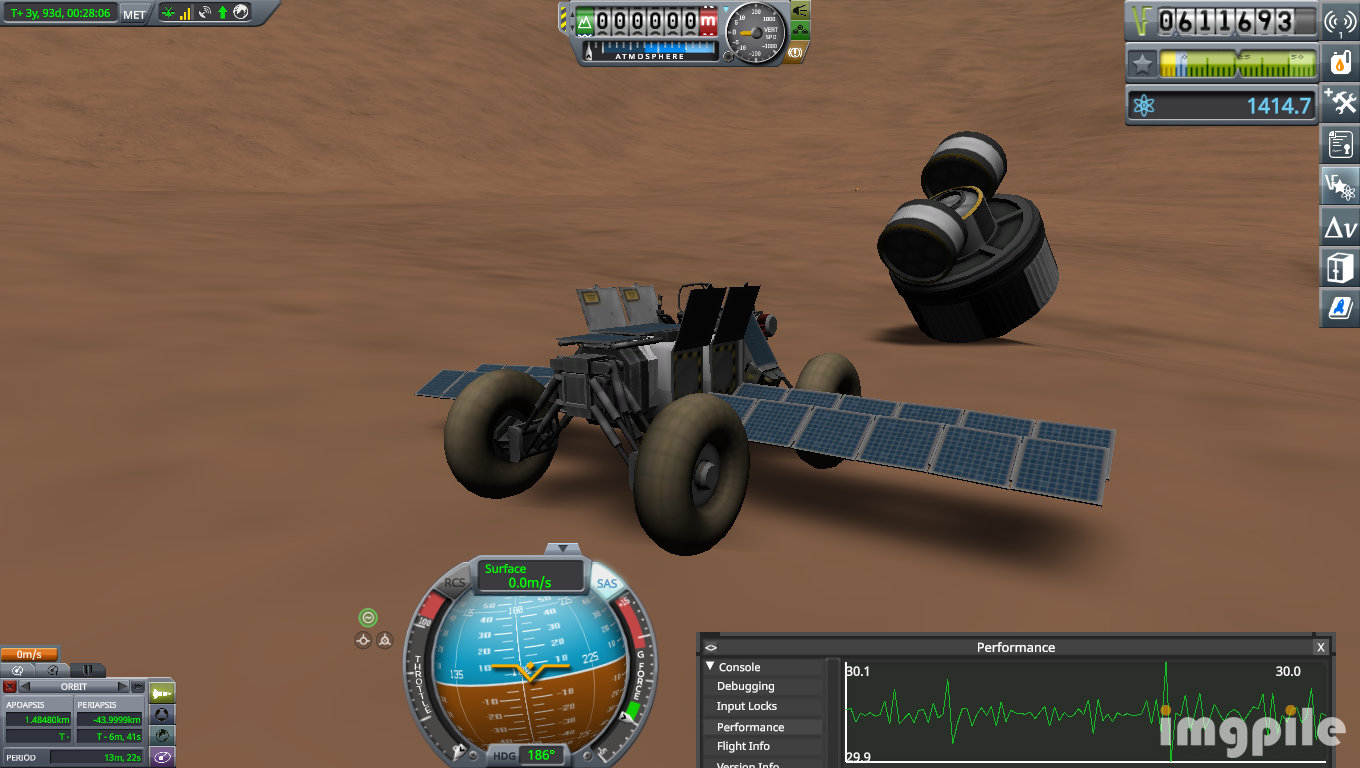
Mission control found Pol to be very hilly. After driving about 100km with difficulty, we found a flattish place with 2.4% ore content.
Jool Survey I still had fuel left. Leaving Pol Relay I behind, at Pol orbit, it flew by Vall, then arrived at Laythe to get a glimpse of the planet.

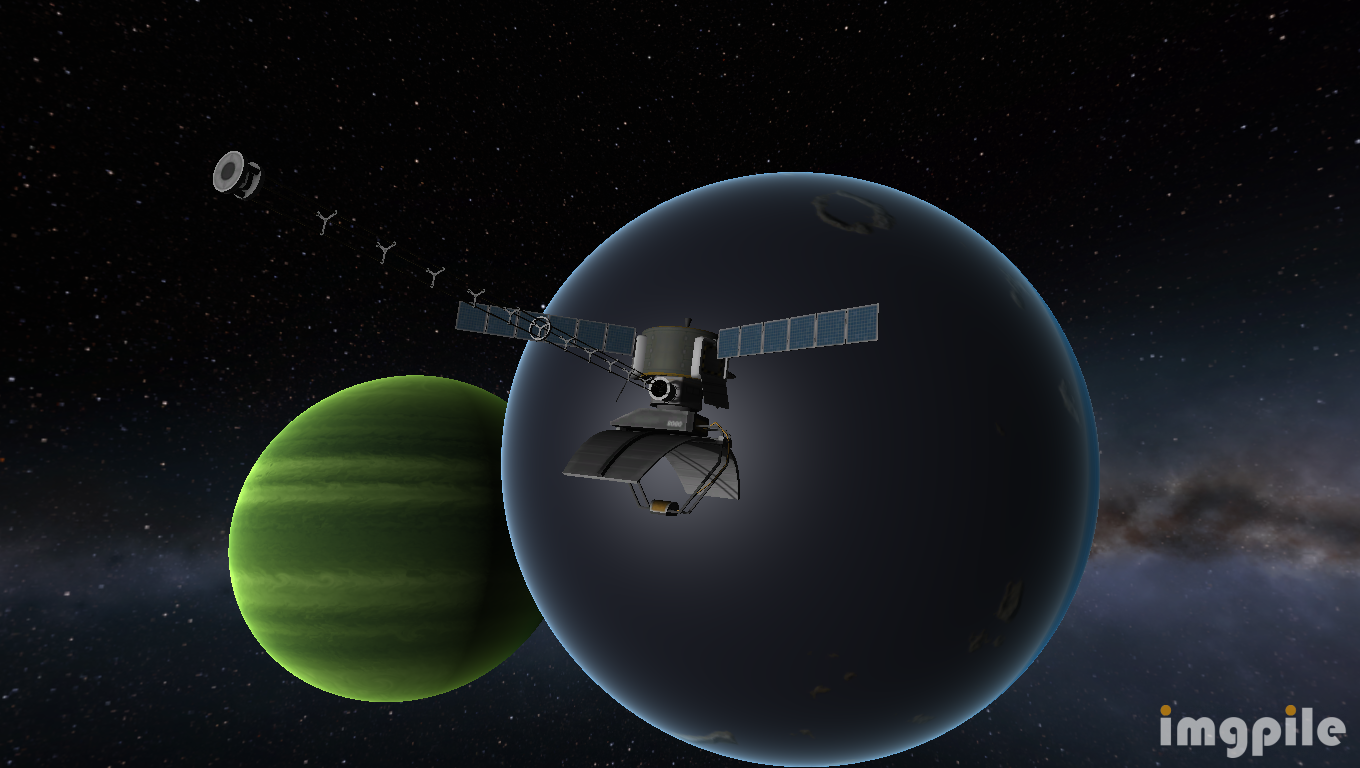
From orbit Laythe looked friendly and we found some ore at the poles.
-
On 1/31/2023 at 1:09 AM, Coyote Foxtrot said:
Landed vessels are a bit iffy. A sure-fire way of keeping a base still is using a ground anchor with a docking port to dock the base to.
OK. I found that retracting the set of legs of the tank module close to the refinery module largely reduces the drift. Using the ground anchor would probably be the best solution. However the refinery module would be too heavy to move. Is it possible to attach the base to a ground anchor without moving it? (Last time I attached a gravity to scanner to one of my own rovers on Ike and the rover bounced).
-
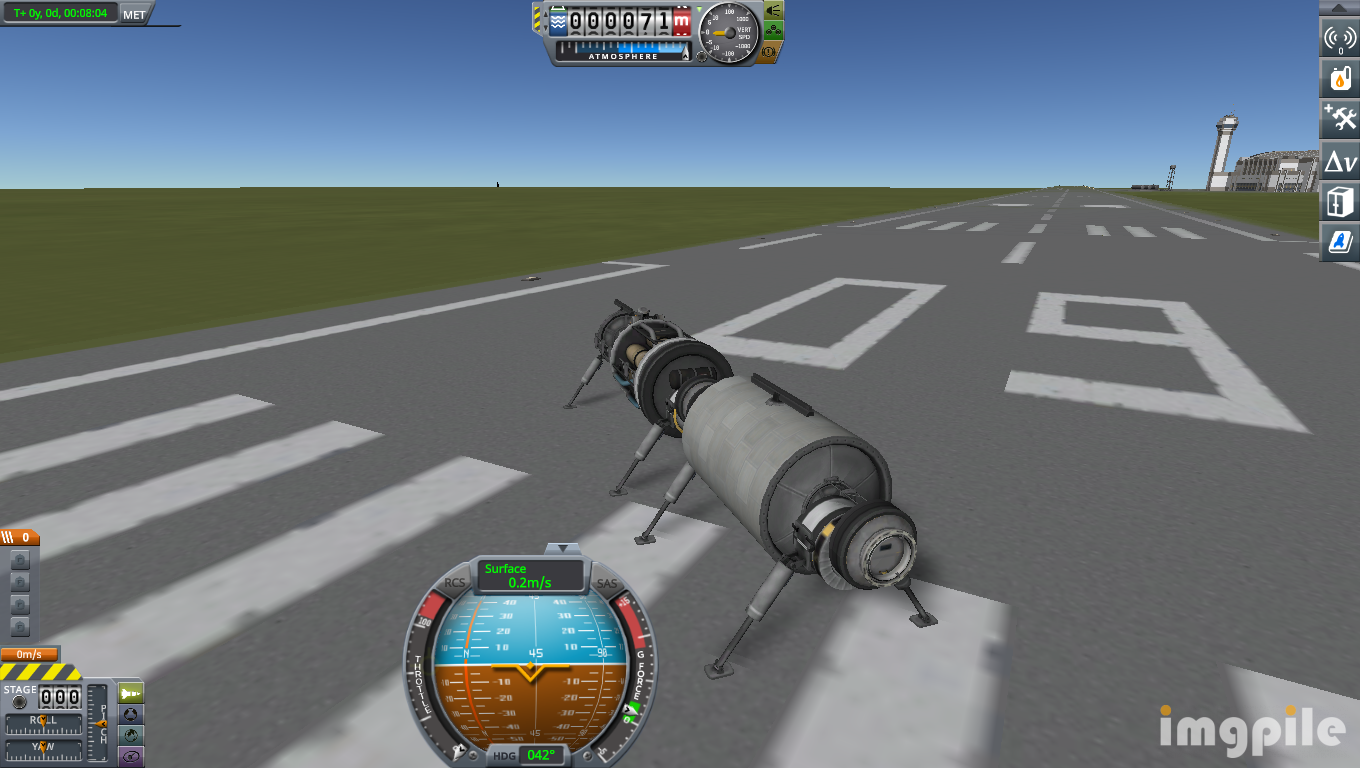
Just a simple mining base as shown. It moves at 0.2 m/s for no reason. The tank module causes this, and only when the tank empty. I have tried different spring and damper settings for the legs. Any idea how to fix that?
-
Rockets aren't the only way to go into space. The HKA (High Kerbin Atmospheric) began as a project fitting rocket engines to Juno powered science planes, to greatly improve their operational ceiling.

Soon our aircraft engineers argued that an improved rocket plane could send a vehicle into orbit, and such aircraft could land back to KSC after completing its mission. However, such vehicle proved to be to advanced for the time, as the wings, the landing gear and the Juno engines were major liabilities when going into space. On the other hand, the rocket engineers 'took' the idea and produced the highly successful S-2F/G reusable rockets. As nobody saw the need for a space plane, the HKA project practically stopped.
A few years later TFK started a new aircraft project, aiming at building an Eco-friendly, electric powered prop plane, again for mysterious reason. The aircraft engineers regrouped.
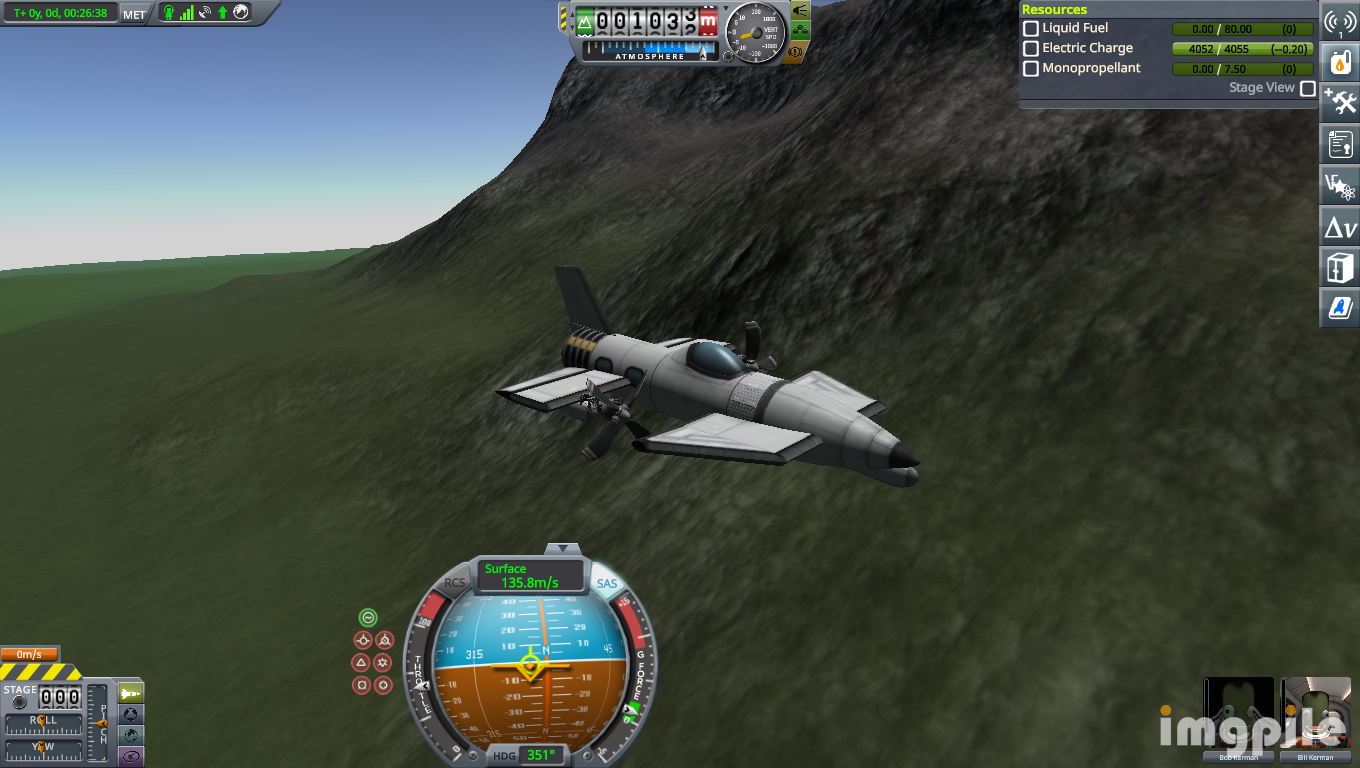
At the same time, TFK was confronting the problem of routinely sending multiple Kerbals into high Kerbin orbit, to meet with a space station under planning. The rocket engineers attempted to build a capsule riding the S-3D lifter. They learned that a rocket shaped capsule cannot do a good aero-braking and controlled glide landing back to KSC, while a more aerodynamic design is difficult to integrate with a rocket. This time the plane group silently took up the challenge, taking advantage of new parts developed for the electric plane, as well as the improved construction facility.
They combined a pair of high performance Panther jets, and a Reliant engine for the S-2F lifter, to produce the HKA-3E space plane.
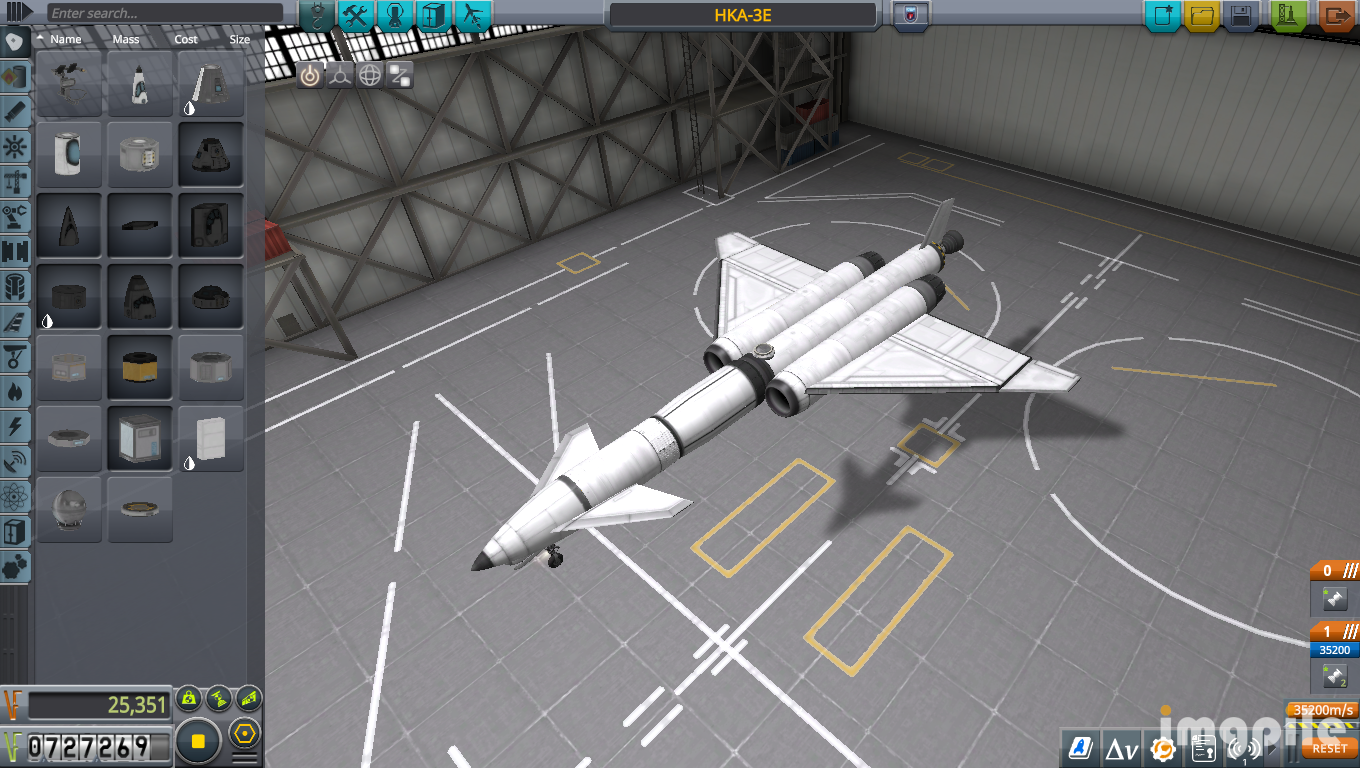
The plane could send 3 Kerbal and some cargo part into LKO, with about 1700 spare Delta V for the subsequent mission. It was capable of aggressive areo braking from high orbit thanks to the fairing protecting the crew cabin. For meridian flight the plane took Val and Bill into orbit and then landed back to KSC runway.
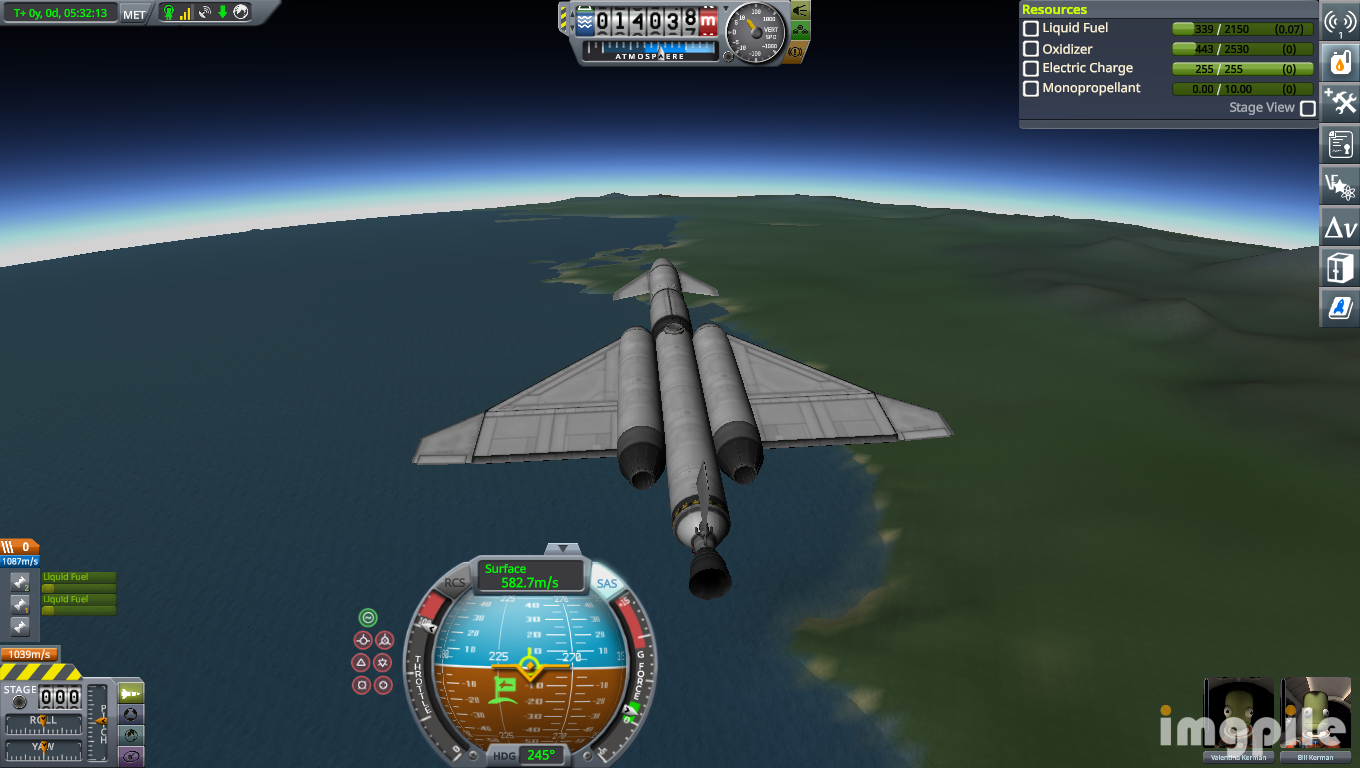
-
Pol Miner I Mission Pt 2 continue from here
On 1/16/2023 at 9:49 PM, TheFlyingKerman said:Pol Miner I Mission Pt 1
SpoilerAs the Jool transfer window was approaching, Pol Miner I was producing fuel much slower than expected. It was decided to send a refuel mission. Minmus Tanker I was launched by the S-3D rocket.
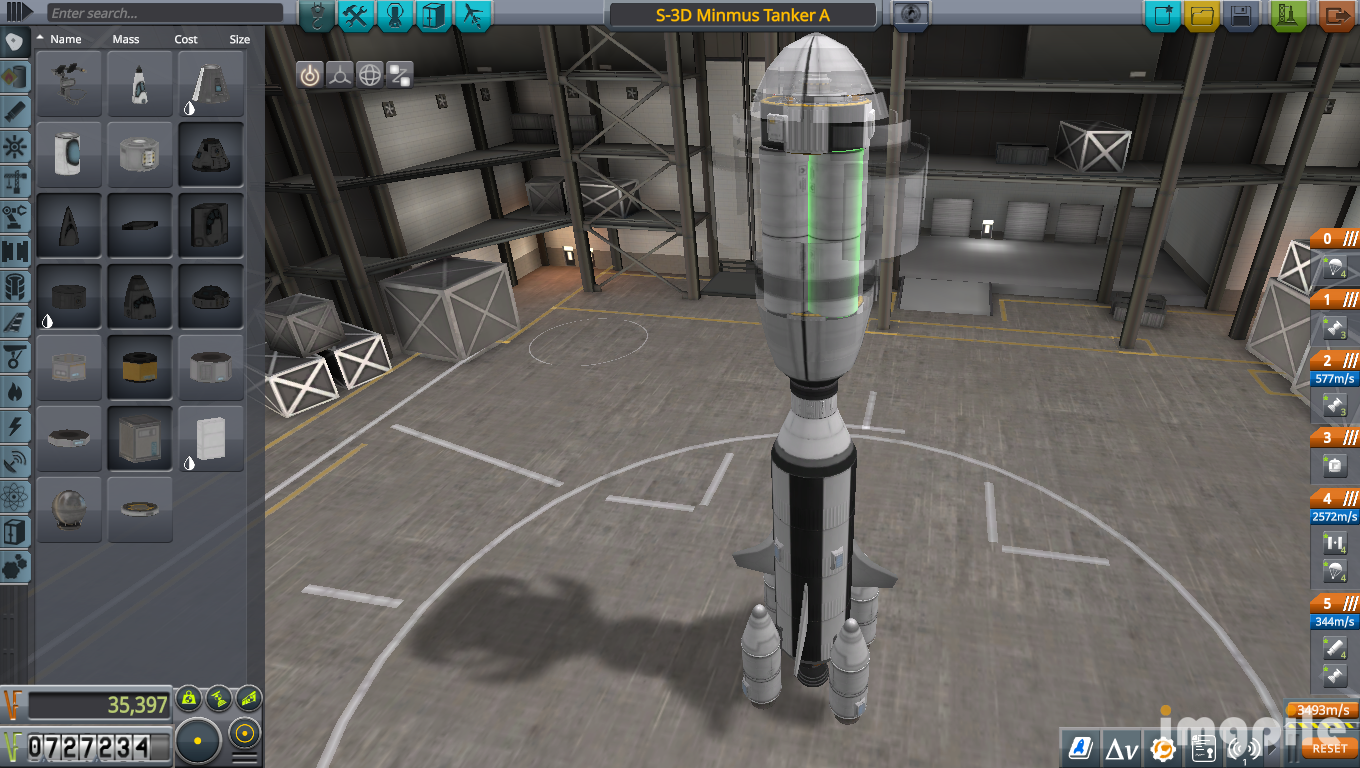
After Minmus Tanker I arrived at Minmus orbit, Pol Miner I hastily lifted off and got refueled.

Then Pol Miner I set off to Jool. Even with fuel received, Delta V was still tight.
Meanwhile, we still had to survey Bop, so we sent another rover.
Bop Lander I Mission Pt 1
SpoilerBop Lander I was similar to Jool Surveyor I in design. The probe consisted of a lander section, a rover section which was the same design as the Pol and Dres rover, and a relay / transfer section featuring the more powerful RA-100 antenna. Again the S-3D rocket sent the probe into orbit a few day after Minmus Miner I. Then Bop Lander I burned for Jool (and I forgot to take a screenshot
 )
)
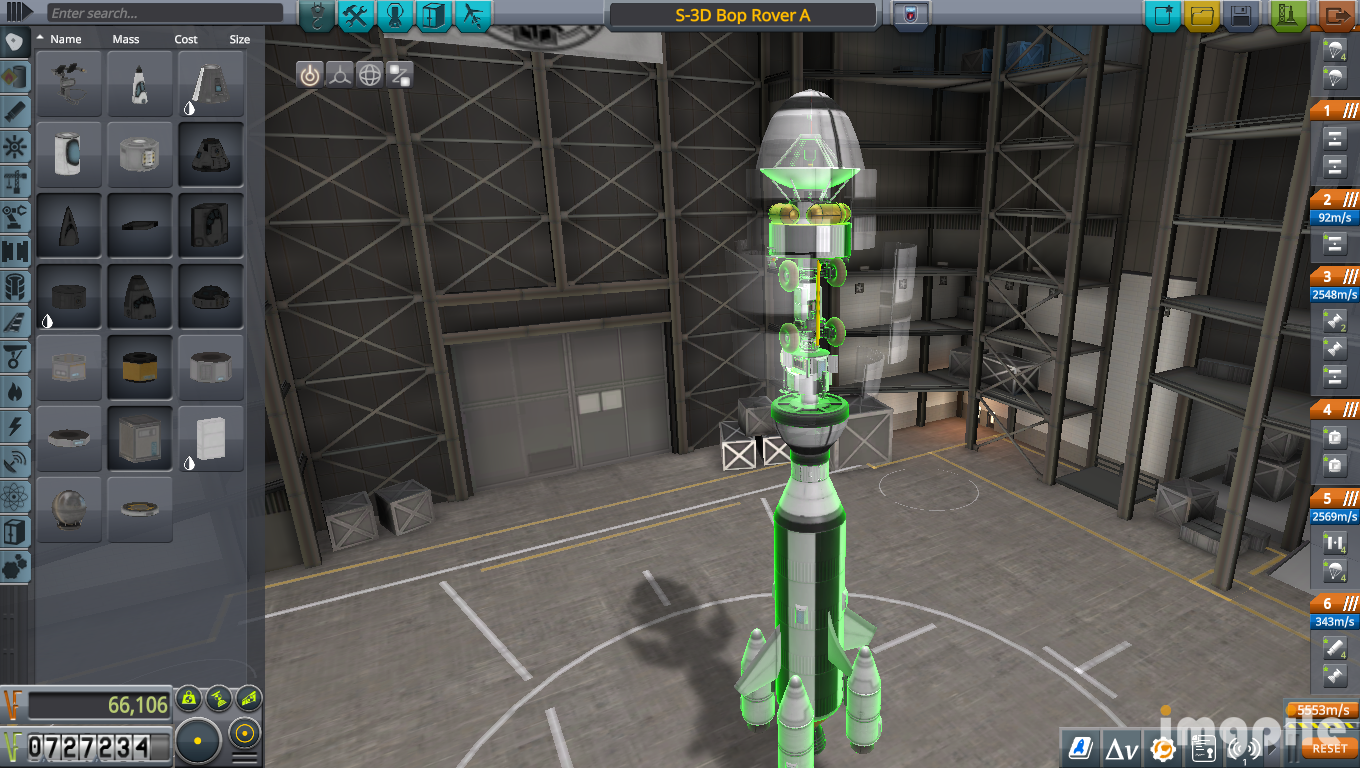
-
While Jool Surveyor I maneuvered to Pol, Dres Lander I arrived at Dres.
Dres Lander I Mission Pt 2 continue from here
On 1/9/2023 at 8:47 PM, TheFlyingKerman said:Dres Lander Mission Pt I
SpoilerAfter a few orbits over Dres performing gravity scans Dres Rover I was detached (there was a strange bug with rover having 0 velocity when spawned, it has to be Alt-F12 ed back to the right orbit).
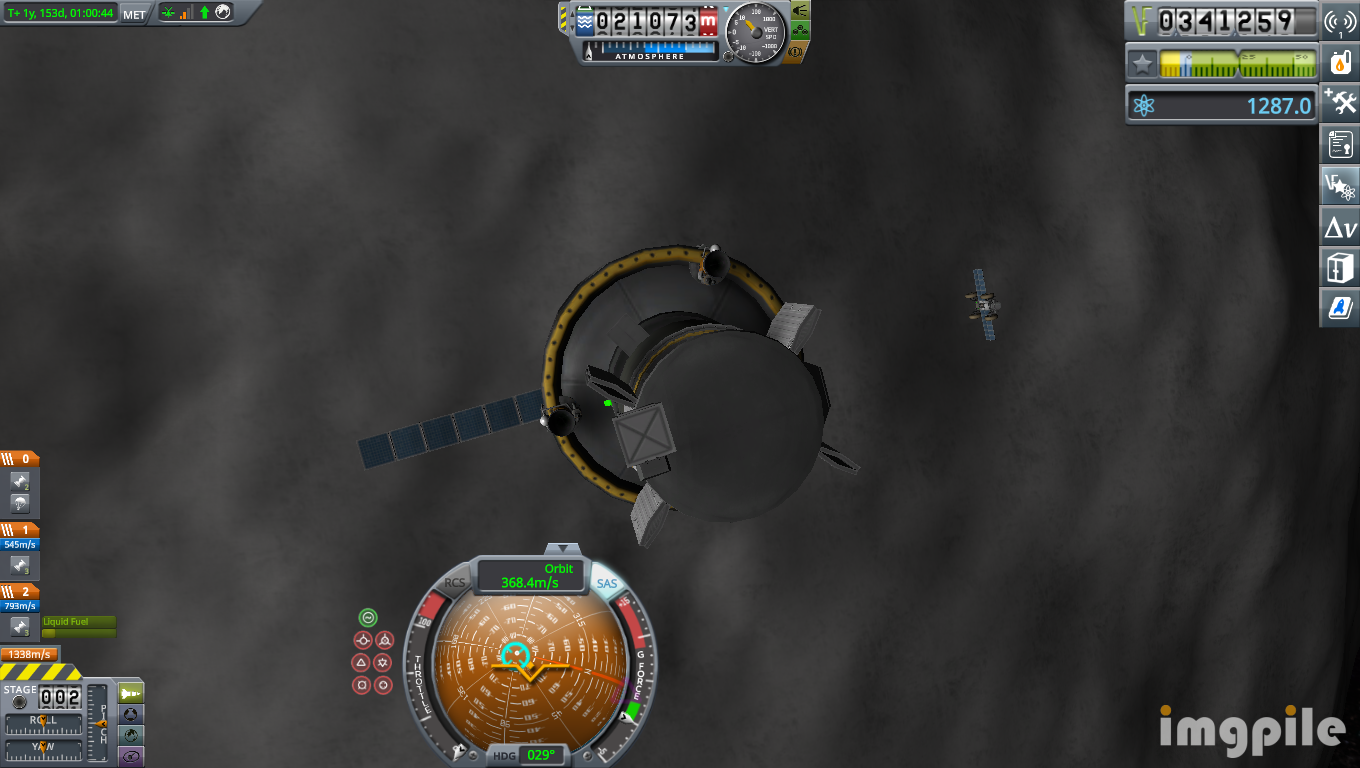
Other than that Dres Rover I landed easily on Dres with the tiny engine.

The Rover's first mission was to survey a flat landing area on Dres.
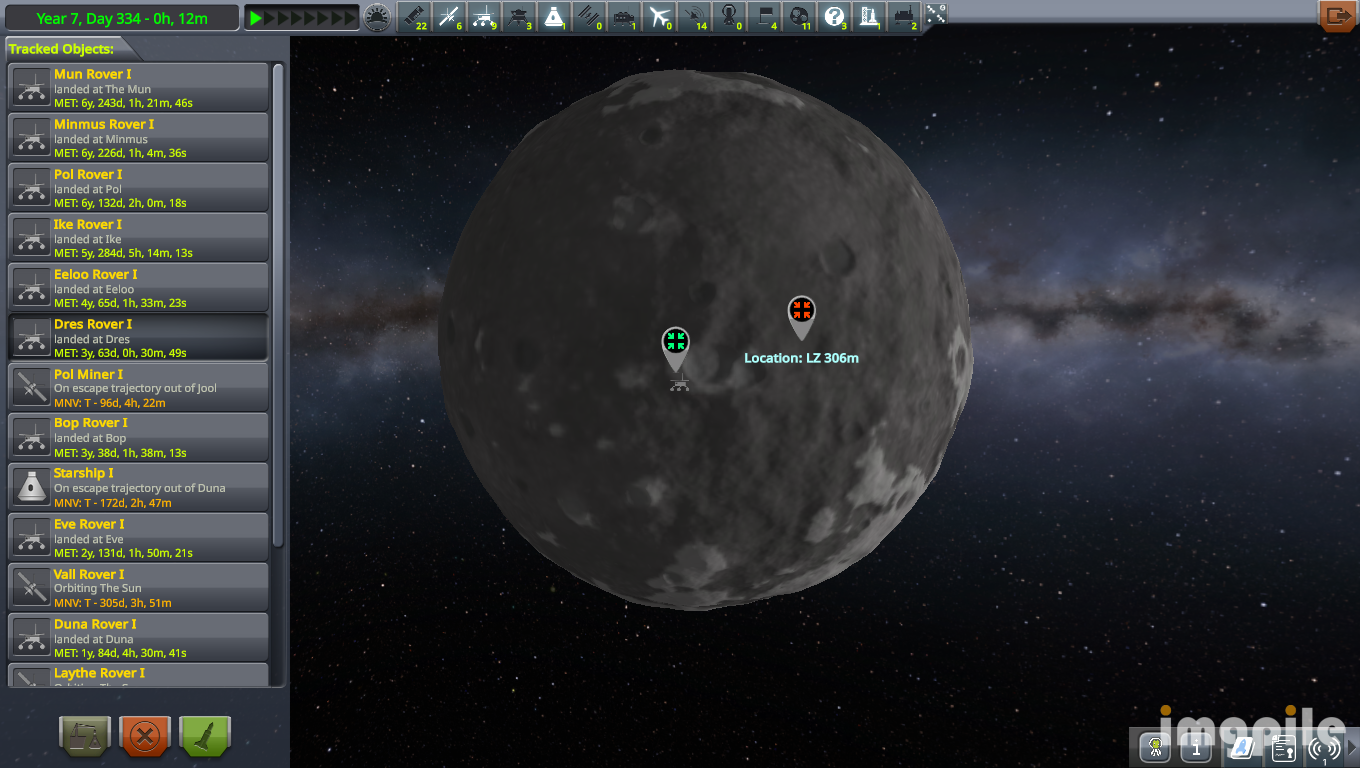
Then Dres Lander I landed on Dres, but was off by a few km. That area on Dres was particular rich in science, with the Lowlands, Ridges, Midlands, Highlands, Impact Craters, Impact Ejecta biomes all with 40 km.

After a few days doing science experiments (the gravity scanner was the only experiment on board - other experiments were on the rover) Dres Lamder I lifted off again and docked with Dres Relay I to refuel.
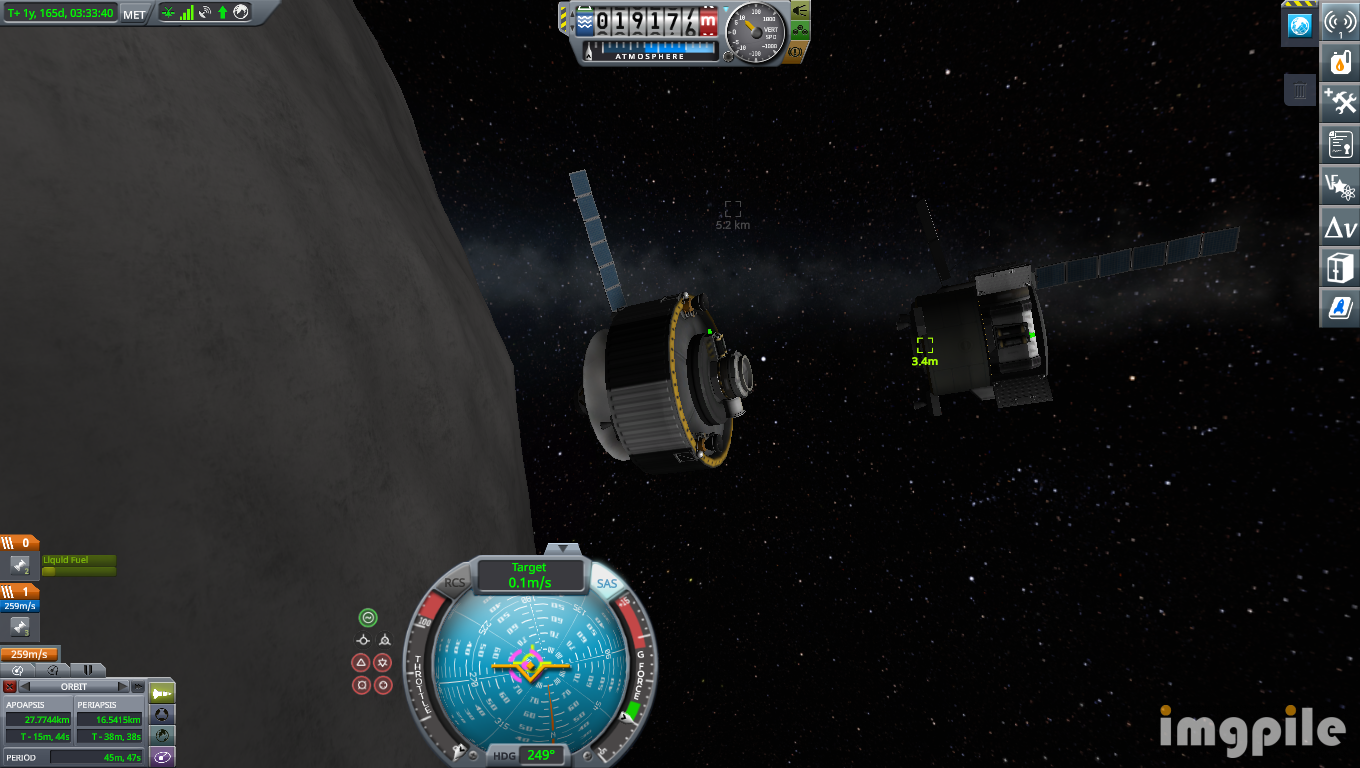
The transfer window was such that after about 70 days at Dres, Dres lander had to begin the flight back to Kerbin.
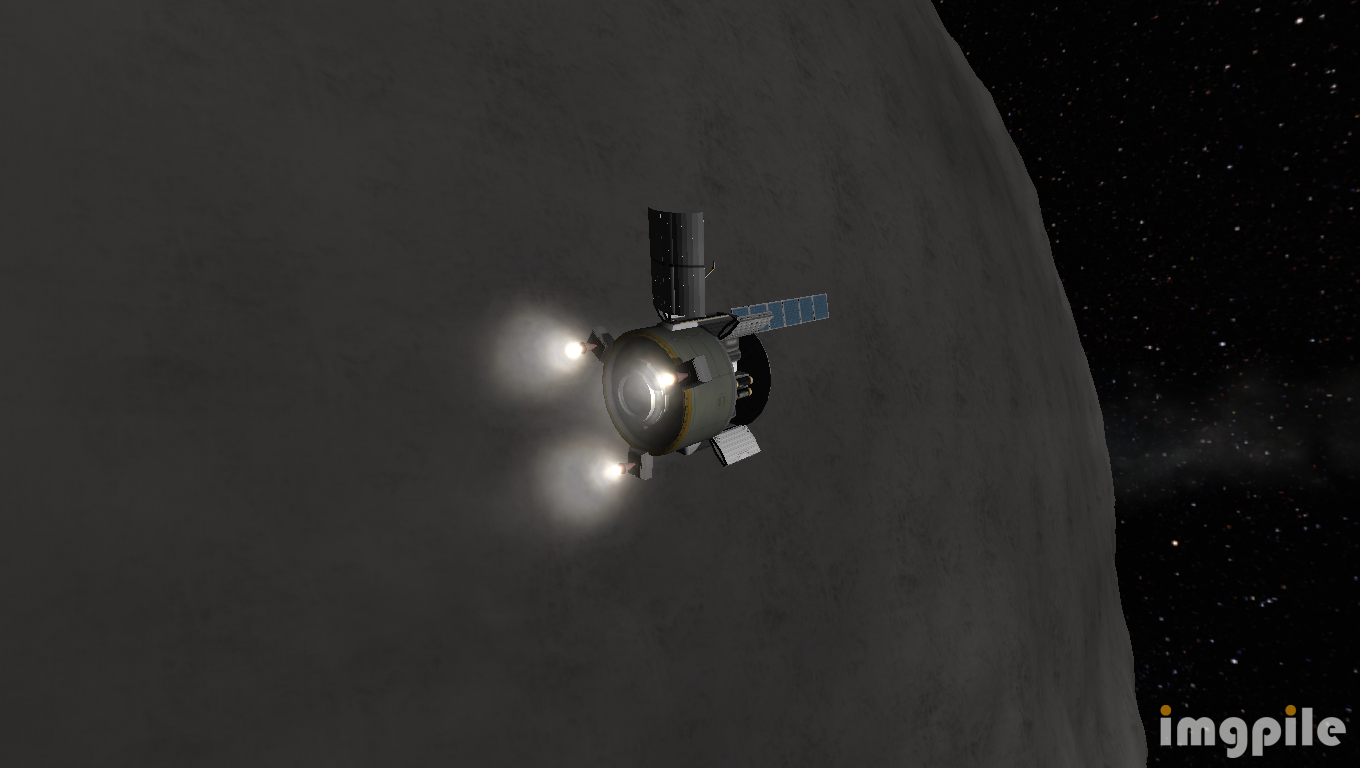
-
Welcome back

-
More rumor on Kerbin... It appears The Truth Foundation has come up with a new device. It first appeared on the launchpad, but was obviously not a rocket. After a few months, both the small SPH and runway were rebuilt.

Then the device was moved back and refitted in the new SPH. Then, from the runway it moved 3 km to the southwest of KSC.
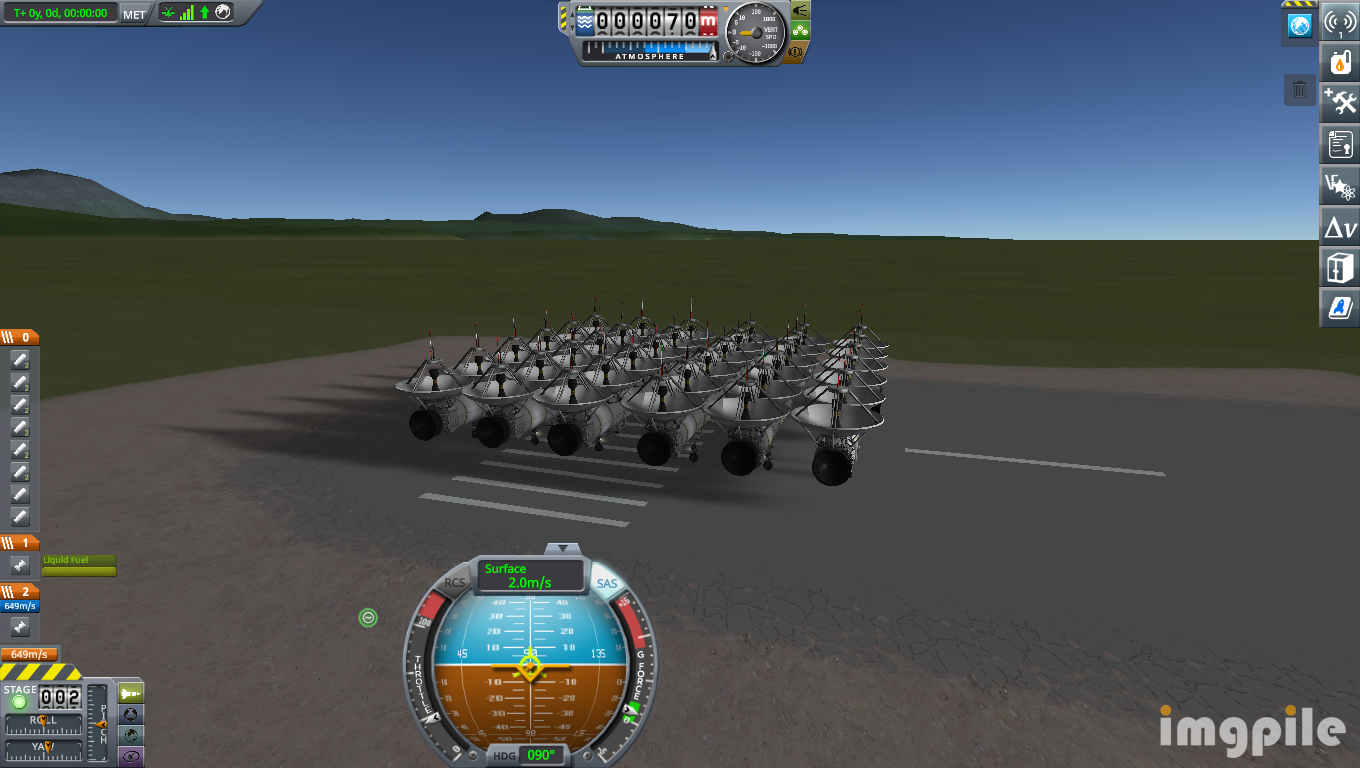
Some self declared experts thought that the antennas could be programmed into a phased array, which would have much greater sensitivity and transmission power than an individual dish. However, why would the engineers of TFK attempt such stunt, and what is the use of such device remains mysterious.
Meanwhile...
Jool Surveyor I Mission Pt 2
SpoilerJool Surveyor I arrived at the Jool system.

It performed a flyby of Tylo, using the moon's gravity to capture into the system, and continued it way to Pol.
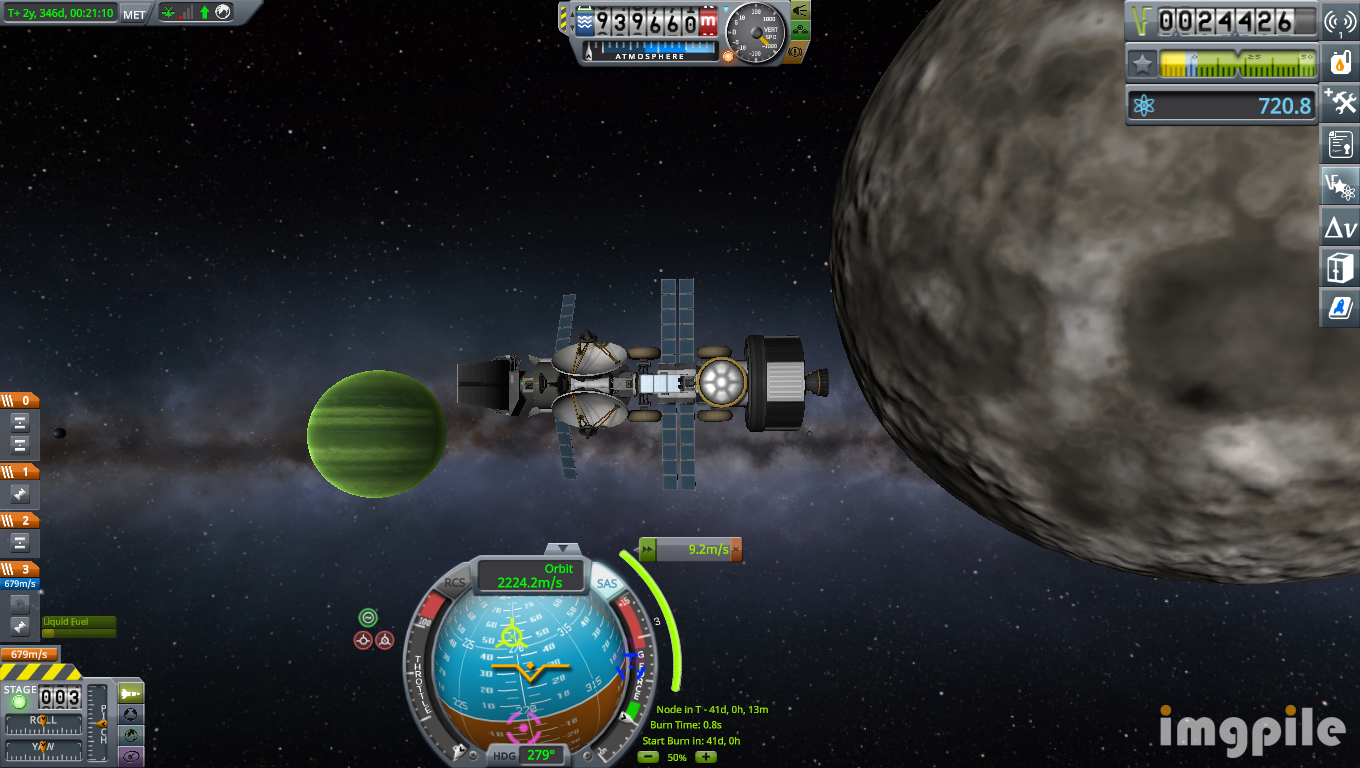
Gilly Lander I Mission Pt 3
SpoilerGilly Lander I returned to Kerbin and was recovered.
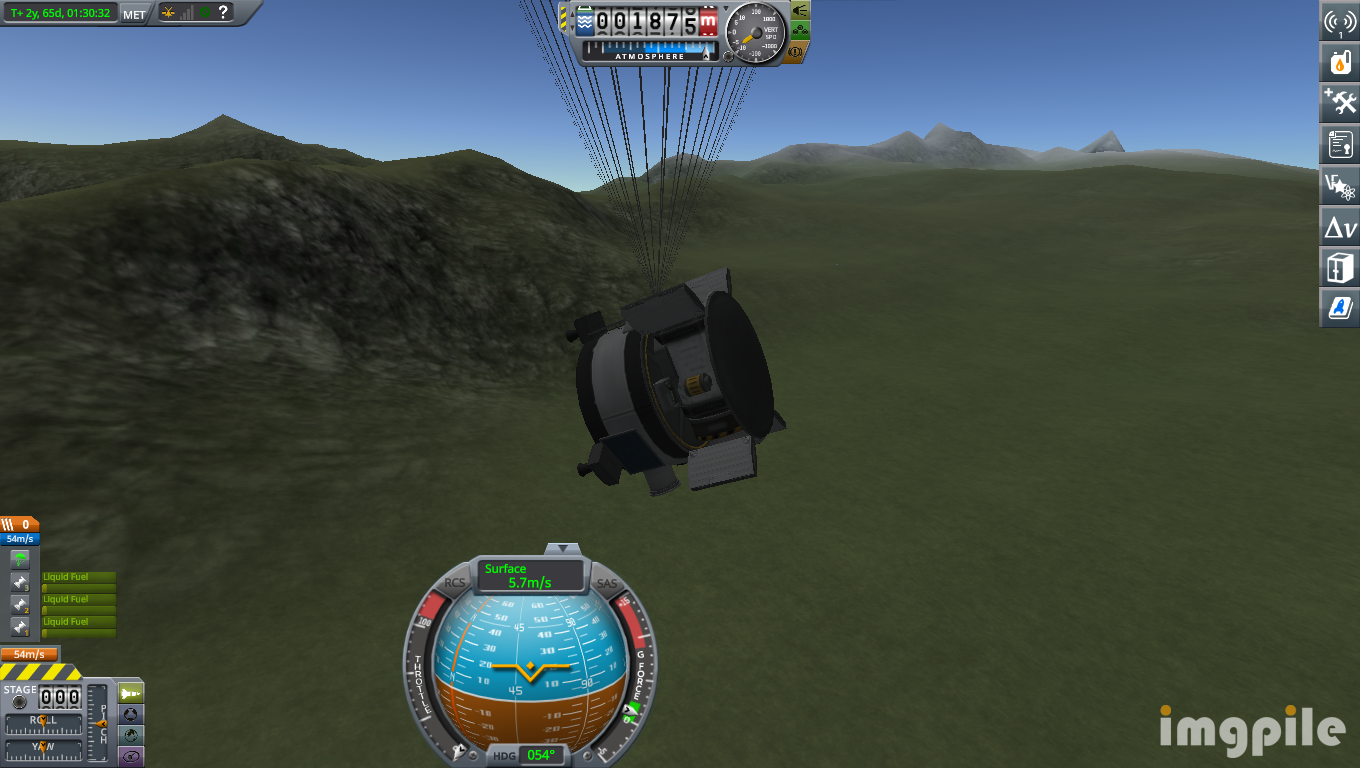
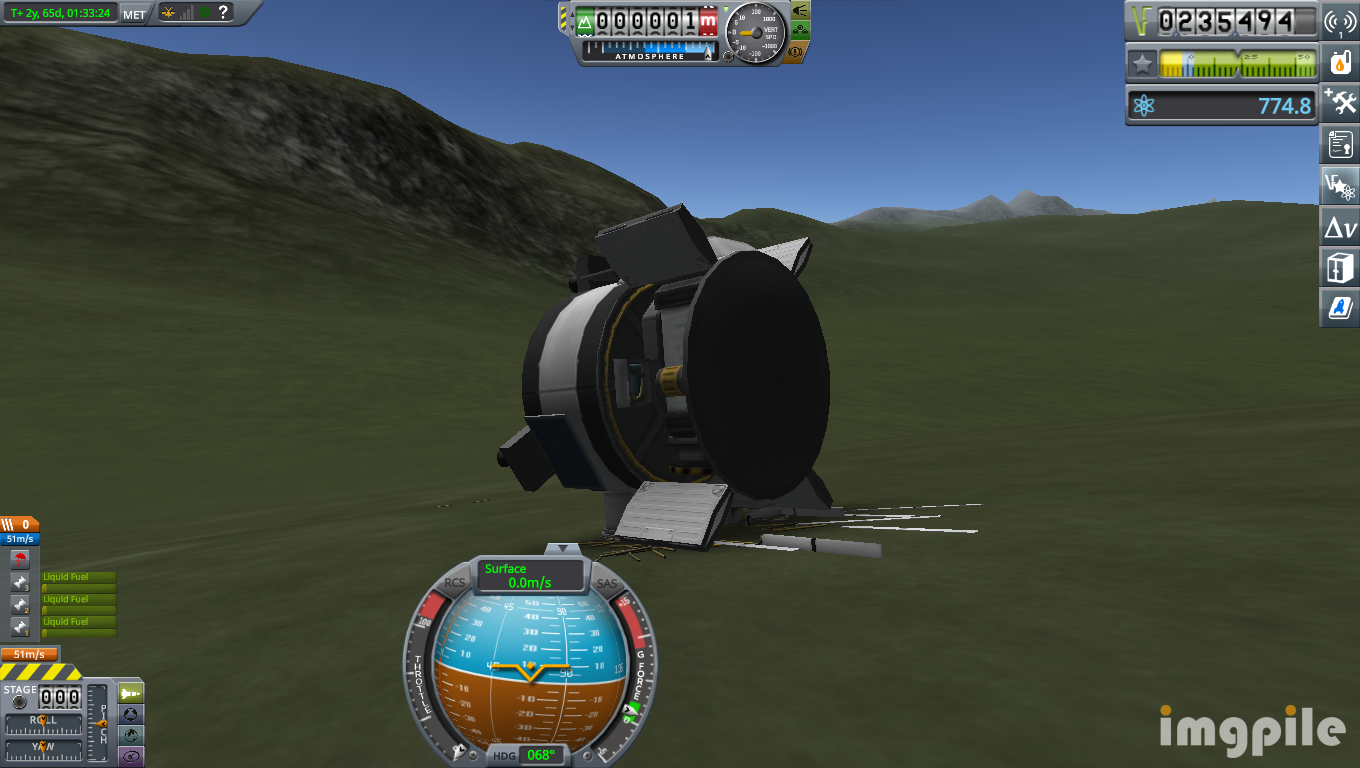
-
I'd begin with fitting the blades with the angle snap tools, to ensure they are perfectly straight. Then after sending the plane out to the runway, set the parking brake, and then turn on the motors with very low torque/RPM, and that the RPM of the motors and AoA of the blades are all exactly the same.
-
After 2 years of research our scientist was finally able to extract the ore inside the Minmus sample and then turn it into useful rocket fuel. The engineers built an ISRU device that automates the process. As Jool Surveyor I was approaching its target, we decided to send a prototype mining and refinery vessel to Minmus for a test, before sending it to Jool.
Pol Miner I Mission Pt 1
SpoilerIn order to fit the S-3D lifter, our engineers came up a miniature mining vessel, the Pol Miner I. It carries a drill, a small converter, an RTG as the power source, and cooling panels and batteries, all within 9.5t.
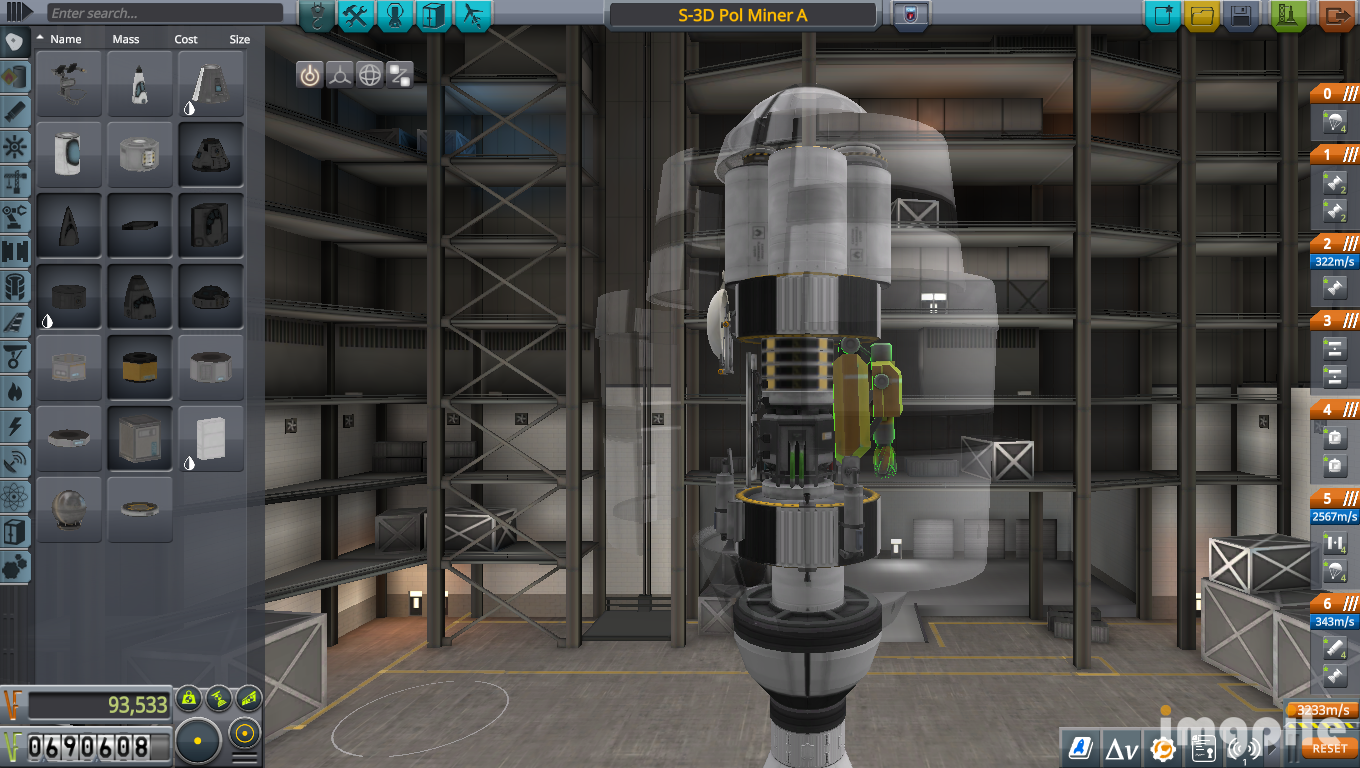
The Delta V was still tight, so the ship had to rely on gravity assist from the Mun in order to go to Minmus. There was just enough fuel to land on the surveyed lowland site southeast of Lesser Flat.
 On 1/15/2023 at 10:33 PM, Maria Sirona said:
On 1/15/2023 at 10:33 PM, Maria Sirona said:Oof... You have set yourself up for some trouble
The Truth Foundation survives by constantly defying expectations

-
Year 3 was also a good window to Eeloo, so we decided to send a rover. That does mean the mission to Jool have to be further postponed.
Eeloo Rover I Mission Pt 1
SpoilerFor this mission, our engineers upgraded the M1 wheel to the TL-2R model, that should increase top speed to 56m/s, and the side solar panels were replaced by retractable one, to receive more sunlight. After the upgrade, the rover weights about 0.9t. The mission had to be fitted to the S-3D rocket. So our engineers adopted a 2-stage transfer design (a Terrier for first stage, a Spark for second stage). A modest RA-15 relay antenna (which was NOT powerful enough to communicate with lv3 DTS while at Eeloo) completed the package.
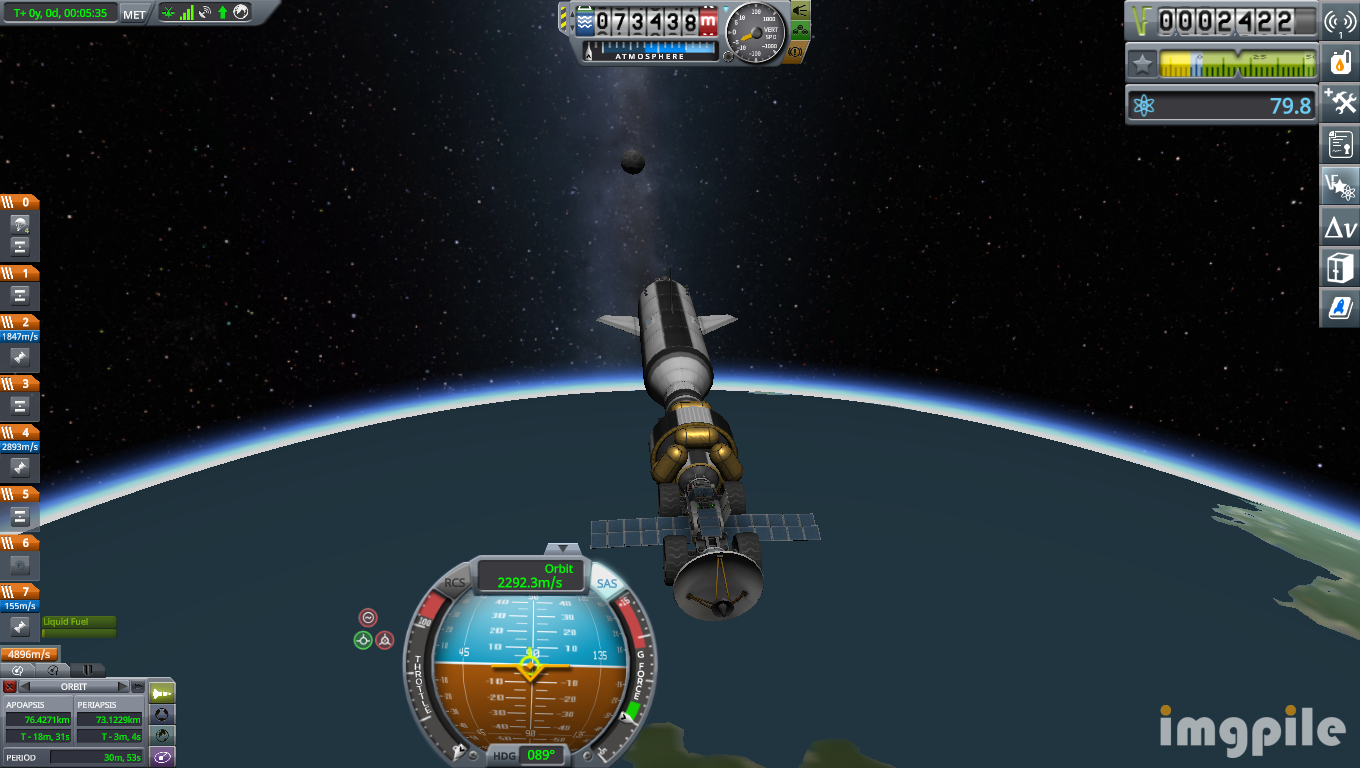
After launching the probe we only have a few thousands Kerbucks left.
-
Yes. Just open the PAW of the mk2 drone core (right click) and then click "Control from here".
-
Challenge accepted

Sky Watchers
in KSP1 Challenges & Mission ideas
Posted
It maybe trivia, the stock skybox contains a few familiar constellations from the Earth
https://ibb.co/7t3ktpB
Bottom: Sagittarius, Right: Scopico
https://ibb.co/m8K10nJ
Bottom left: Orion, Top: Gemini, Right: Auriga, Bottom right: Taurus with Pleiades in the square lower right.